Sardinia, the second-largest island in the Mediterranean, is a paradise of turquoise waters, pristine beaches, rugged mountains, and charming villages. Known for its unique culture, ancient history, and mouthwatering cuisine, Sardinia is a dream destination for travelers seeking both relaxation and adventure. Whether you’re lounging on the Costa Smeralda’s white-sand beaches, exploring the mysterious Nuragic ruins, or savoring a glass of Vermentino wine, Sardinia offers something for everyone.
In this comprehensive Sardinia Itinerary, we’ll guide you through the perfect one-week trip to this stunning island. From the best places to stay and top things to do, to practical tips on getting around and budgeting, this guide has everything you need to plan an unforgettable Sardinian adventure. Let’s dive in!
Sardinia Itinerary
Table of contents
- Sardinia Itinerary
- Why Visit Sardinia?
- Best Time to Visit Sardinia
- How to Get to Sardinia
- How to Get Around Sardinia
- Driving on Sardinia
- How Much Does It Cost to Rent a Car in Sardinia?
- Is Sardinia Expensive to Visit?
- A Week in Sardinia: Map and Itinerary
- 10 Things to Do in Sardinia
- Sardinia Itinerary: In Conclusion
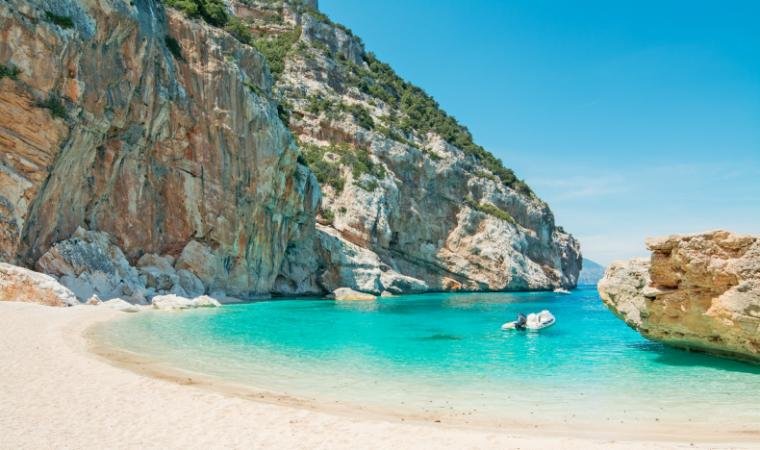
Disclosure: Some links in this post are affiliate links. If you make a purchase through one of these links, we may earn a small commission (at no extra cost to you!). We're very grateful when you use our links to make a purchase:-).
Why Visit Sardinia?
Sardinia, the jewel of the Mediterranean, is a destination that captivates travelers with its stunning landscapes, rich history, and vibrant culture. Whether you’re planning a relaxing beach getaway, an adventurous hiking trip, or a cultural exploration, Sardinia has something for everyone. In this guide, we’ll delve into the many reasons why Sardinia should be at the top of your travel bucket list and how it fits perfectly into your Sardinia Itinerary.
1. Stunning Beaches and Crystal-Clear Waters
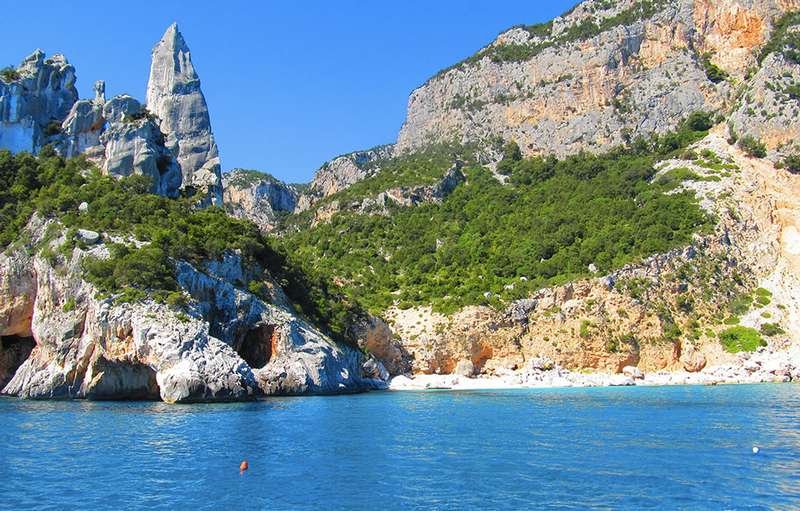
Sardinia is renowned for its breathtaking beaches, often ranked among the best in the world. The island’s coastline stretches over 1,800 kilometers, offering a diverse array of beaches, from secluded coves to expansive sandy shores.
Highlights:
- Costa Smeralda: Famous for its emerald-green waters and luxurious resorts.
- Cala Luna: A picturesque beach surrounded by dramatic limestone cliffs.
- Spiaggia di Chia: Known for its golden sand and turquoise waters.
Including these beaches in your Sardinia Itinerary ensures plenty of opportunities for relaxation and water activities like swimming, snorkeling, and sunbathing.
2. Rich History and Ancient Ruins
Sardinia’s history dates back thousands of years, with influences from the Nuragic civilization, Romans, Phoenicians, and more. The island is dotted with ancient ruins, medieval castles, and charming villages that tell the story of its fascinating past.
Highlights:
- Su Nuraxi di Barumini: A UNESCO World Heritage Site featuring well-preserved Nuragic ruins.
- Tharros: An ancient Phoenician-Roman city with stunning coastal views.
- Castelsardo: A medieval town perched on a hilltop, offering panoramic views of the sea.
Exploring these historical sites adds depth and context to your Sardinia Itinerary, making your trip both educational and enriching.
3. Delicious Cuisine and Local Wines
Sardinian cuisine is a delightful blend of Mediterranean flavors, with a focus on fresh, local ingredients. The island is also home to some excellent wines, making it a paradise for food and wine lovers.
Must-Try Dishes:
- Porceddu: Roast suckling pig, a Sardinian specialty.
- Culurgiones: Stuffed pasta similar to ravioli, often filled with potatoes and cheese.
- Seadas: A dessert made of fried pastry filled with cheese and drizzled with honey.
Local Wines:
- Vermentino: A crisp white wine perfect for pairing with seafood.
- Cannonau: A robust red wine known for its rich flavor.
Including culinary experiences in your Sardinia Itinerary allows you to savor the island’s unique flavors and traditions.
4. Outdoor Adventures and Natural Beauty
Sardinia’s diverse landscapes offer endless opportunities for outdoor activities. From hiking in the mountains to exploring sea caves, the island is a playground for nature enthusiasts.
Highlights:
- Gennargentu National Park: Ideal for hiking and wildlife spotting.
- Grotta di Nettuno (Neptune’s Grotto): A stunning sea cave accessible by boat or a scenic staircase.
- Maddalena Archipelago: A group of islands perfect for sailing and snorkeling.
Adding these outdoor adventures to your Sardinia Itinerary ensures an active and exhilarating trip.
5. Unique Culture and Festivals
Sardinia’s culture is a unique blend of Italian and indigenous traditions, with its own language, music, and festivals. The island’s vibrant cultural scene offers a rich and immersive experience for visitors.
Highlights:
- Sardinian Language: While Italian is widely spoken, many locals also speak Sardo, the island’s native language.
- Traditional Music: Experience the haunting sounds of the launeddas, a traditional Sardinian wind instrument.
- Festivals: Don’t miss the Sagra di Sant’Efisio, a colorful festival held in Cagliari every May.
Including cultural experiences in your Sardinia Itinerary allows you to connect with the island’s heritage and traditions.
6. Charming Villages and Towns
Sardinia is home to numerous charming villages and towns, each with its own unique character and charm. Exploring these picturesque locales is a highlight of any trip to the island.
Highlights:
- Alghero: A Catalan-influenced town with a beautiful old quarter and stunning sea views.
- Bosa: A colorful riverside town known for its medieval castle and artisan shops.
- Orgosolo: Famous for its vibrant murals that depict social and political themes.
Visiting these towns adds variety and charm to your Sardinia Itinerary, offering a glimpse into the island’s diverse cultural landscape.
7. Luxurious Resorts and Relaxation
For those seeking a more luxurious experience, Sardinia offers a range of high-end resorts and spas. The Costa Smeralda, in particular, is known for its glamorous atmosphere and world-class amenities.
Highlights:
- Cervo Hotel: A luxury resort in Porto Cervo offering stunning views and top-notch service.
- Hotel Cala di Volpe: A five-star hotel known for its elegant design and exclusive beach.
- Spa Treatments: Many resorts offer spa treatments using local ingredients like myrtle and olive oil.
Including a stay at a luxury resort in your Sardinia Itinerary ensures a relaxing and indulgent experience.
Why Sardinia is a Must-Visit Destination
Sardinia is a destination that offers something for everyone, from its stunning beaches and ancient ruins to its delicious cuisine and vibrant culture. Whether you’re planning a relaxing beach getaway, an adventurous hiking trip, or a cultural exploration, Sardinia has it all. With this Sardinia Itinerary, you’ll have the perfect guide to exploring the island’s highlights and creating unforgettable memories.
Find the best hotel deals for your next trip! Compare prices and book your stay on
Hostelworld: Meet fellow travellers — save on stays, Backpacker-friendly hostels, verified reviews and social stays that fit your budget and vibe.
Tripadvisor: Plan with confidence — reviews you can trust, Restaurants, hotels and experiences with millions of traveller reviews to help you choose what’s best.
Traveloka: Flights, hotels & more — simple booking, One-stop travel platform for great flight fares, hotel deals and local activities across Asia and beyond.
In Conclusion
If you’re planning a Sardinia Itinerary, you’re in for a treat. This enchanting island offers a perfect blend of natural beauty, rich history, and vibrant culture, making it a must-visit destination for any traveler. So, pack your bags, grab your map, and get ready to explore the beauty of Sardinia. Buon viaggio!
Best Time to Visit Sardinia
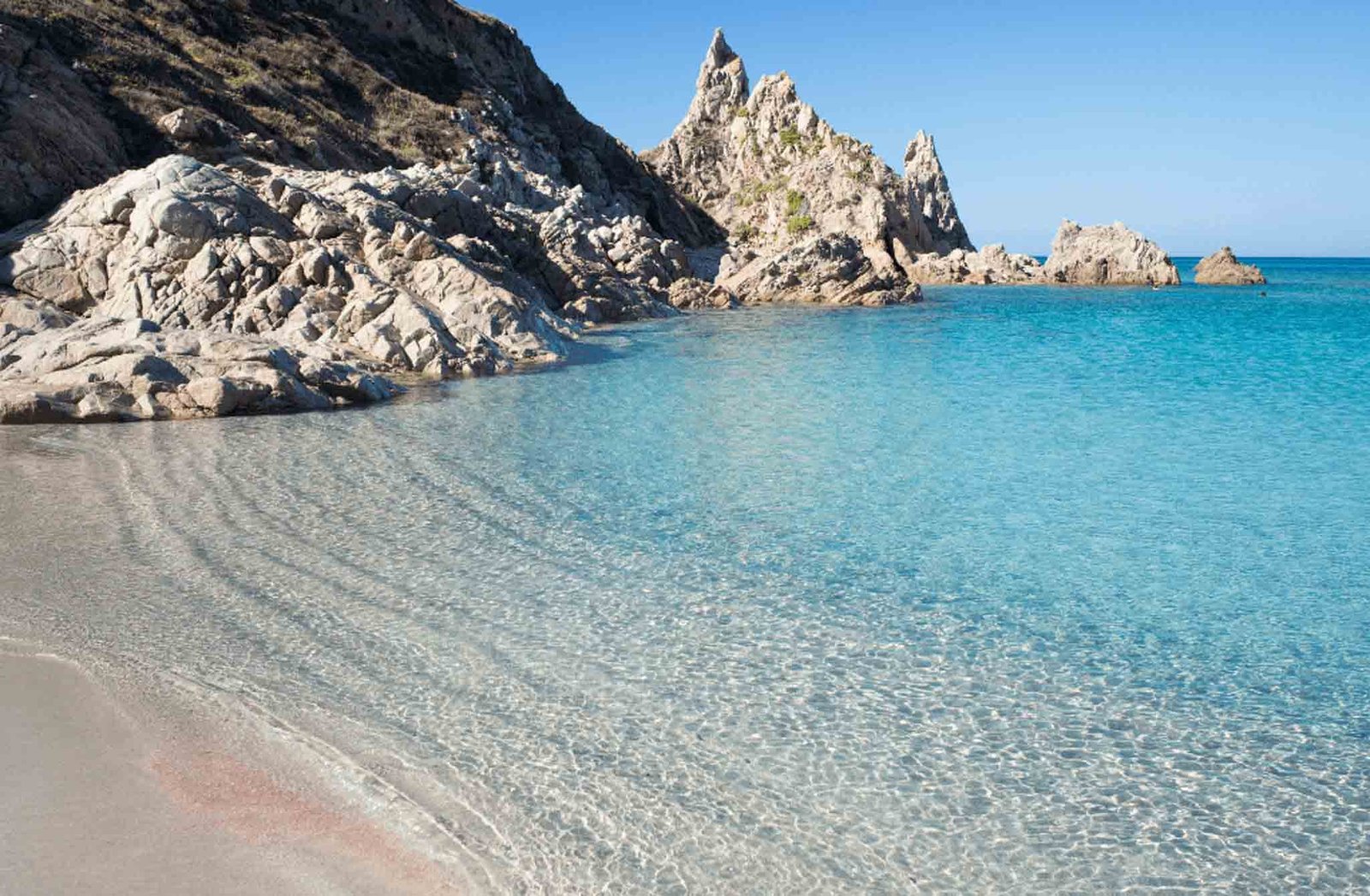
When planning your Sardinia Itinerary, choosing the right time to visit is crucial to making the most of your trip. Sardinia’s Mediterranean climate means it enjoys mild winters and hot summers, but each season offers unique experiences. Whether you’re looking for sunny beach days, blooming landscapes, or fewer crowds, here’s a detailed guide to the best time to visit Sardinia.
1. Summer (June-August)
Why Visit in Summer?
- Perfect Beach Weather: Warm temperatures (25-35°C) and long sunny days make it ideal for beach lovers.
- Vibrant Atmosphere: The island comes alive with festivals, outdoor concerts, and bustling markets.
- Water Activities: Ideal for swimming, snorkeling, and sailing.
What to Do:
- Relax on Costa Smeralda’s Beaches: Enjoy the glamorous beaches of Porto Cervo and Porto Rotondo.
- Explore the Maddalena Archipelago: Take a boat tour to discover stunning islands and hidden coves.
- Attend Festivals: Experience local culture at events like the Sagra del Redentore in Nuoro.
Tips:
- Book Early: Summer is peak tourist season, so book accommodations and activities in advance.
- Stay Hydrated: The heat can be intense, so drink plenty of water and wear sunscreen.
2. Spring (April-May)
Why Visit in Spring?
- Mild Weather: Pleasant temperatures (15-25°C) are perfect for outdoor activities.
- Blooming Landscapes: The island is lush and green, with wildflowers in full bloom.
- Fewer Crowds: Enjoy popular attractions without the summer crowds.
What to Do:
- Hike in Gennargentu National Park: Explore scenic trails and enjoy panoramic views.
- Visit Ancient Ruins: Discover sites like Su Nuraxi and Tharros in comfortable weather.
- Explore Charming Villages: Stroll through towns like Bosa and Castelsardo without the summer hustle.
Tips:
- Pack Layers: Spring weather can be unpredictable, so bring a mix of light and warm clothing.
- Enjoy Local Cuisine: Spring is a great time to try fresh, seasonal dishes at local trattorias.
3. Autumn (September-October)
Why Visit in Autumn?
- Warm Seas: The Mediterranean is still warm, perfect for swimming and water sports.
- Harvest Season: Experience the grape and olive harvests, with plenty of food and wine festivals.
- Fewer Tourists: Enjoy a more relaxed atmosphere after the summer rush.
What to Do:
- Wine Tasting: Visit vineyards in the Cannonau and Vermentino regions.
- Explore Cagliari: Discover the capital’s historic sites and vibrant markets.
- Hike and Bike: Take advantage of the cooler weather for outdoor adventures.
Tips:
- Check Festival Dates: Autumn is festival season, so plan around events like the Autunno in Barbagia.
- Book Mid-Range Accommodations: With fewer tourists, you can often find great deals on hotels and rentals.
4. Winter (November-March)
Why Visit in Winter?
- Peace and Quiet: Escape the crowds and enjoy a tranquil experience.
- Mild Climate: While cooler (10-15°C), the weather is still pleasant for exploring.
- Cultural Experiences: Visit museums, historical sites, and enjoy local cuisine without the summer rush.
What to Do:
- Explore Alghero: Wander through the charming old town and visit Neptune’s Grotto.
- Relax in Hot Springs: Visit thermal baths like those in Fordongianus.
- Enjoy Local Festivals: Experience winter events like the Carnevale in February.
Tips:
- Check Opening Hours: Some attractions and restaurants may have reduced hours or be closed.
- Pack Warm Clothing: While mild, winter evenings can be chilly, especially in the mountains.
Why Timing Matters for Your Sardinia Itinerary
Choosing the best time to visit Sardinia ensures you can fully enjoy the activities and experiences that interest you most. Whether you’re looking for sunny beach days, blooming landscapes, or a peaceful retreat, timing your trip right is key to creating the perfect Sardinia Itinerary.
In Conclusion
Sardinia is a year-round destination, but the best time to visit depends on your preferences and travel goals. From the vibrant summer beaches to the tranquil winter villages, each season offers unique experiences that can enhance your Sardinia Itinerary. So, plan wisely, pack accordingly, and get ready to explore the beauty of Sardinia. Buon viaggio
Amazing Things To Do In Bologna: Itinerary & Travel Guide
How to Get to Sardinia
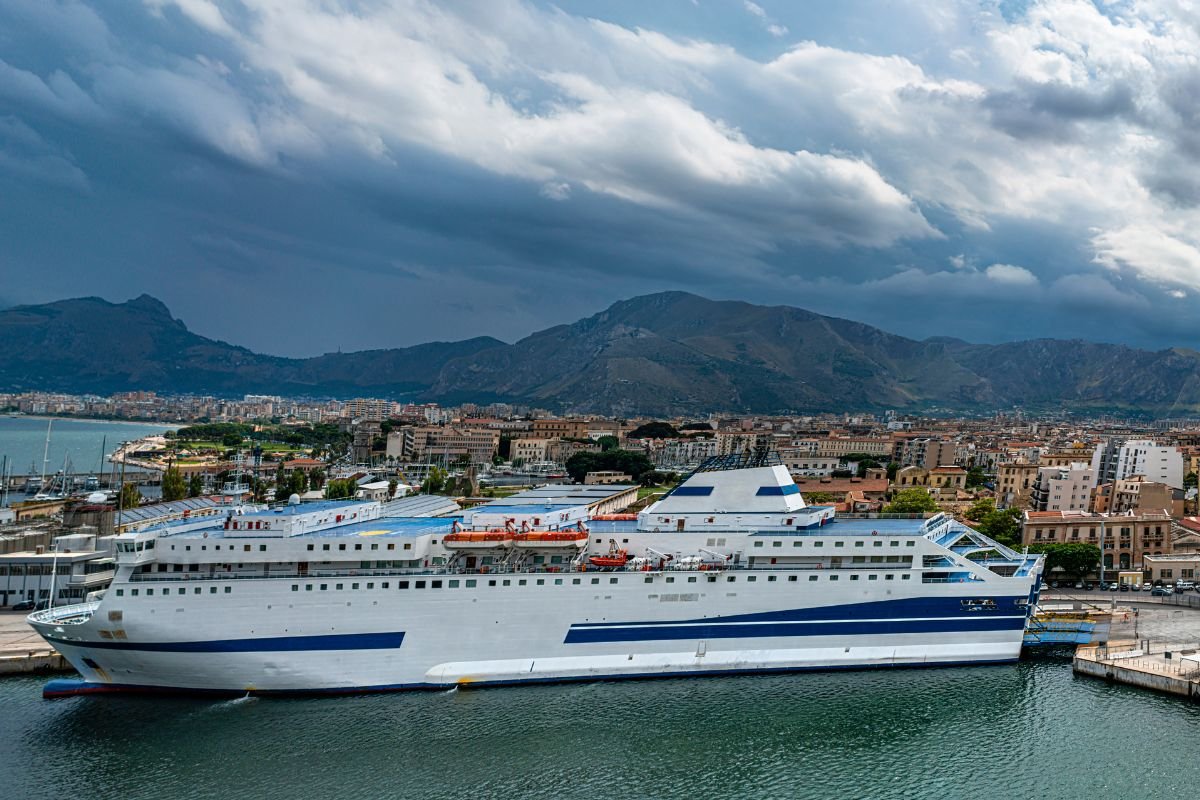
Planning your Sardinia Itinerary starts with figuring out how to get to this stunning Mediterranean island. Sardinia is well-connected to mainland Italy and other European countries, making it accessible by both air and sea. Whether you prefer a quick flight or a scenic ferry ride, here’s a detailed guide to help you reach Sardinia with ease.
1. By Air
Sardinia has three main airports, each serving different parts of the island:
Cagliari-Elmas Airport (CAG)
- Location: Southern Sardinia, near the capital city of Cagliari.
- Best For: Exploring the south, including beaches like Villasimius and historical sites like Su Nuraxi.
- Airlines: Major airlines like Alitalia, Ryanair, and EasyJet operate flights to Cagliari.
- Connections: Direct flights from major European cities like Rome, Milan, London, and Paris.
Olbia Costa Smeralda Airport (OLB)
- Location: Northeastern Sardinia, near the Costa Smeralda.
- Best For: Beach lovers and those heading to the glamorous Costa Smeralda or the Maddalena Archipelago.
- Airlines: Airlines like Ryanair, EasyJet, and Lufthansa offer flights to Olbia.
- Connections: Direct flights from cities like Rome, Milan, Berlin, and Amsterdam.
Alghero-Fertilia Airport (AHO)
- Location: Northwestern Sardinia, near the town of Alghero.
- Best For: Exploring the northwest, including Alghero, Bosa, and the Neptune’s Grotto.
- Airlines: Ryanair, EasyJet, and other regional airlines operate flights to Alghero.
- Connections: Direct flights from cities like Rome, Milan, Barcelona, and Dublin.
2. By Ferry
For those who enjoy a scenic journey, taking a ferry to Sardinia is a great option. The island is well-connected to mainland Italy and other Mediterranean destinations by ferry.
Main Ferry Routes:
- From Genoa: Ferries to Porto Torres (northwest) and Olbia (northeast).
- From Livorno: Ferries to Olbia and Golfo Aranci (northeast).
- From Civitavecchia (near Rome): Ferries to Olbia, Arbatax (east), and Cagliari (south).
- From Naples: Ferries to Cagliari.
- From Sicily (Palermo): Ferries to Cagliari.
Ferry Companies:
- Grimaldi Lines: Offers routes from Genoa, Livorno, and Civitavecchia.
- Moby Lines: Operates ferries from Livorno and Genoa.
- Tirrenia: Provides routes from Civitavecchia, Naples, and Palermo.
Travel Time:
- From Genoa: Approximately 11-12 hours.
- From Civitavecchia: Around 6-8 hours.
- From Naples: About 14 hours.
3. By Car
If you’re already in Italy and prefer to drive, you can take your car on a ferry to Sardinia. This is a convenient option if you plan to explore the island extensively by car.
Tips for Driving to Sardinia:
- Book in Advance: Ferry spaces for cars can fill up quickly, especially in summer.
- Check Ferry Schedules: Plan your trip around ferry departure times.
- Consider Overnight Ferries: Overnight ferries can save you time and accommodation costs.
4. By Train
While there are no direct trains to Sardinia, you can take a train to one of the mainland ports (like Genoa, Livorno, or Civitavecchia) and then board a ferry.
Looking for cheap flights or all-in-one travel deals? Check out:
Trip.com (Competitive flight & hotel bundles)
Expedia (Flight + hotel savings)
WayAway.io (Cashback on flights & travel bookings)
Tips for Train Travel:
- Book Tickets Early: Train tickets can be cheaper if booked in advance.
- Check Connections: Ensure your train arrival time aligns with ferry departures.
Why Choosing the Right Transport Matters for Your Sardinia Itinerary
Selecting the best way to get to Sardinia depends on your travel preferences, budget, and itinerary. Flying is the quickest option, while ferries offer a scenic and relaxing journey. Including transportation details in your Sardinia Itinerary ensures a smooth and stress-free start to your trip.
Whether you choose to fly or take a ferry, getting to Sardinia is the first step in your adventure. With multiple airports and ferry routes, the island is easily accessible from various locations. Plan your journey carefully, and you’ll be ready to explore the stunning beaches, rich history, and vibrant culture of Sardinia. Buon viaggio!
How to Get Around Sardinia
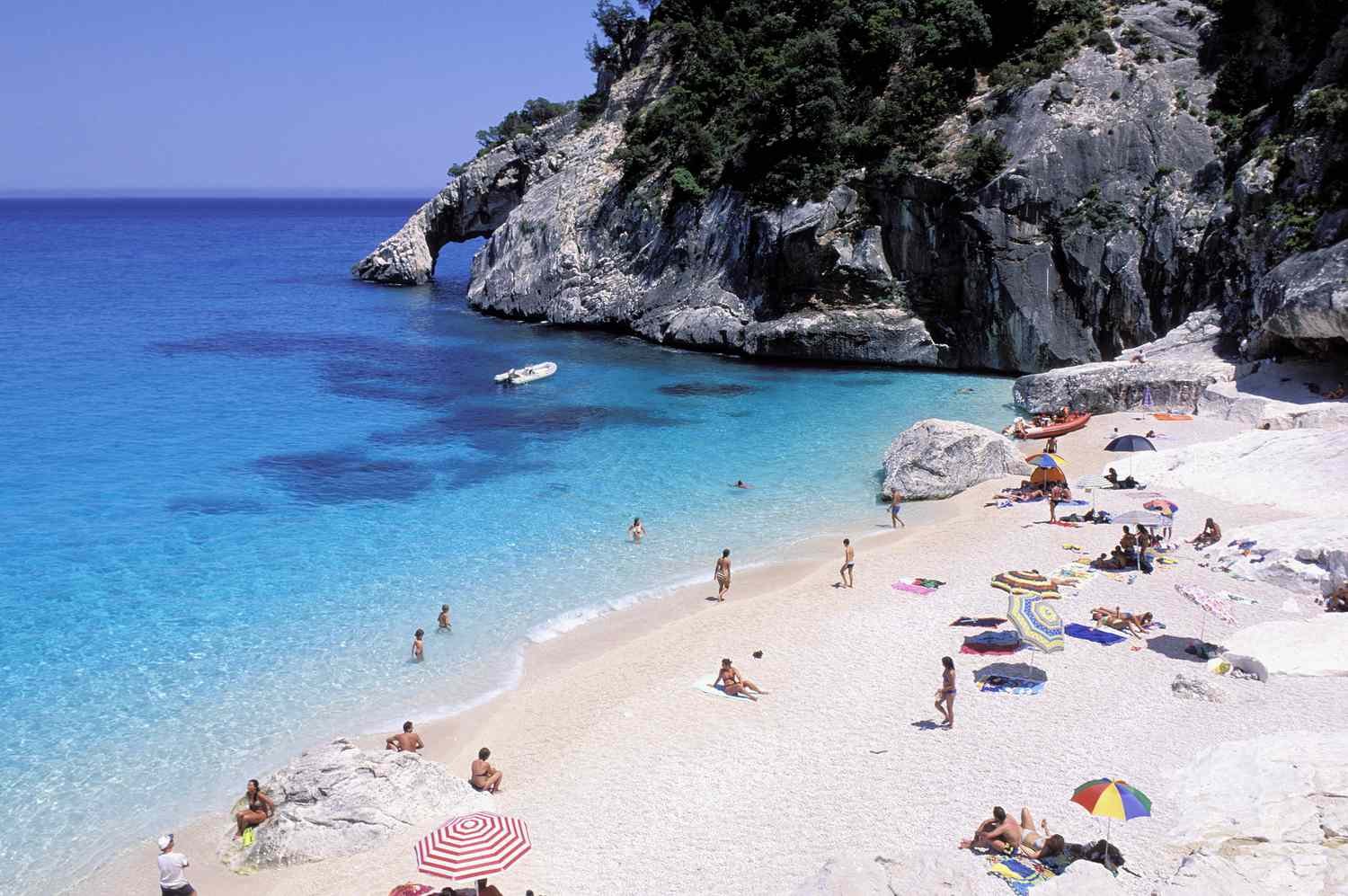
Once you’ve arrived in Sardinia, the next step in your Sardinia Itinerary is figuring out how to get around the island. Sardinia’s diverse landscapes, from stunning beaches to rugged mountains, make it essential to choose the right mode of transportation. Whether you prefer the flexibility of driving, the convenience of public transport, or the ease of guided tours, here’s a detailed guide to help you navigate Sardinia with ease.
1. By Car
Why Rent a Car?
- Flexibility: Explore remote beaches, charming villages, and hidden gems at your own pace.
- Convenience: Access areas not served by public transport.
- Scenic Drives: Enjoy breathtaking coastal and mountain routes.
Tips for Driving in Sardinia:
- Road Conditions: Main roads are well-maintained, but rural areas may have narrow or winding roads.
- Parking: Free parking is available in many areas, but paid parking is common in tourist hotspots.
- Fuel Costs: Petrol and diesel prices are comparable to mainland Italy.
- Rental Costs: Expect to pay around €30-€50 per day for a standard car. Weekly rentals can cost €200-€350.
Recommended Car Rental Companies:
Need a ride? Book airport transfers, taxis, or rental cars easily:
Kiwitaxi (Reliable private transfers worldwide)
Rentalcars.com (Compare car rentals for the best price)
2. By Public Transport
Buses
- ARST: The main bus operator in Sardinia, offering routes across the island.
- Turmo Travel: Operates long-distance buses between major cities and tourist destinations.
- Local Buses: Available in cities like Cagliari, Olbia, and Alghero.
Trains
- Trenitalia: Operates regional trains connecting major cities like Cagliari, Olbia, and Sassari.
- Scenic Routes: The Trenino Verde (Green Train) offers scenic journeys through Sardinia’s countryside.
Tips for Public Transport:
- Schedules: Check timetables in advance, as services can be infrequent, especially in rural areas.
- Tickets: Purchase tickets at stations, kiosks, or online.
- Combination: Consider combining buses and trains for longer journeys.
3. By Taxi and Rideshares
Taxis
- Availability: Taxis are available in cities and tourist areas but can be expensive.
- Booking: Use official taxi stands or book through apps like Rentalcars.
Rideshares
- BlaBlaCar: A popular ridesharing service in Europe, offering affordable rides between cities.
Tips for Taxis and Rideshares:
- Fares: Agree on fares in advance or ensure the meter is running.
- Safety: Use reputable services and share ride details with someone.
4. By Bicycle
Why Cycle?
- Eco-Friendly: Reduce your carbon footprint while exploring.
- Scenic Routes: Enjoy Sardinia’s beautiful landscapes at a slower pace.
Tips for Cycling:
- Rental Shops: Rent bikes in major cities and tourist areas.
- Routes: Stick to designated bike paths and quieter roads.
- Safety: Wear a helmet and follow traffic rules.
5. By Boat
Why Take a Boat?
- Island Hopping: Explore the Maddalena Archipelago and other nearby islands.
- Scenic Tours: Enjoy coastal views and visit sea caves like Neptune’s Grotto.
Tips for Boating:
- Tours: Book guided boat tours for a hassle-free experience.
- Ferries: Use ferries to reach islands and coastal towns.
Why Choosing the Right Transport Matters for Your Sardinia Itinerary
Selecting the best way to get around Sardinia depends on your travel preferences, budget, and itinerary. Driving offers the most flexibility, while public transport is cost-effective for city travel. Including transportation details in your Sardinia Itinerary ensures a smooth and enjoyable trip.
Whether you choose to drive, take public transport, or explore by bike or boat, getting around Sardinia is an adventure in itself. Plan your transportation carefully, and you’ll be ready to discover the stunning beaches, rich history, and vibrant culture of this beautiful island. Buon viaggio!
Driving on Sardinia
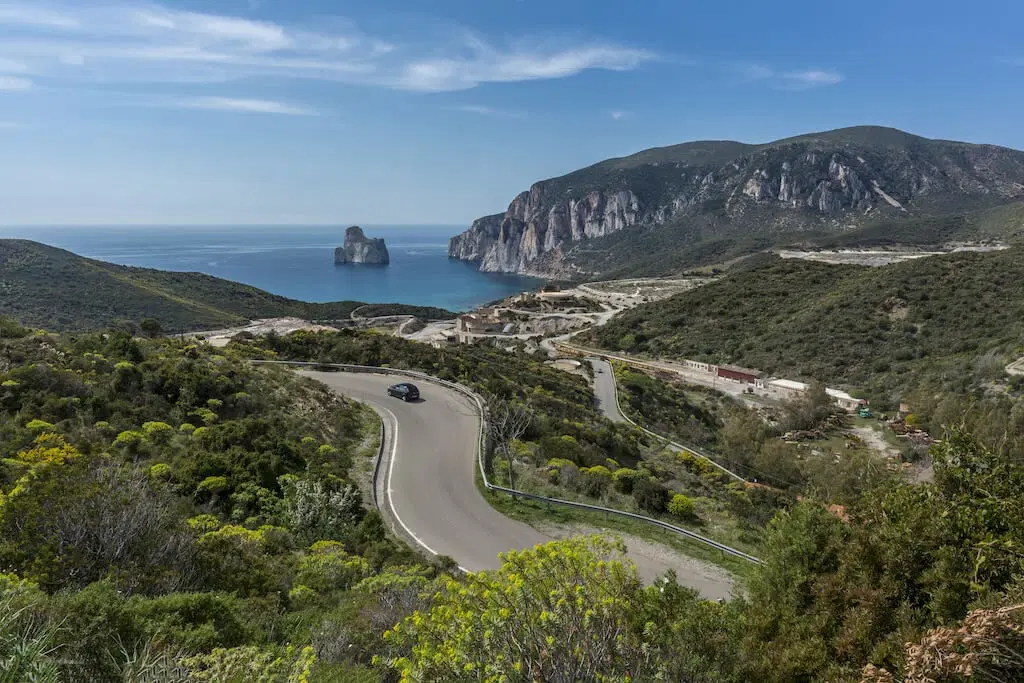
Driving is one of the best ways to explore Sardinia, offering the flexibility to discover the island’s hidden gems, remote beaches, and charming villages at your own pace. However, driving in Sardinia comes with its own set of challenges and considerations. In this guide, we’ll cover everything you need to know about driving on Sardinia, ensuring your Sardinia Itinerary is both enjoyable and stress-free.
1. Road Conditions
Highways and Main Roads
- SS131 (Carlo Felice Highway): Connects Cagliari in the south to Sassari and Porto Torres in the north.
- SS125 (Orientale Sarda): Runs along the eastern coast, offering scenic views.
- SS126 and SS130: Connect central Sardinia to the west and east coasts.
Rural and Mountain Roads
- Narrow and Winding: Many rural and mountain roads are narrow and winding, requiring careful driving.
- Gravel Roads: Some remote areas may have gravel or unpaved roads, so drive cautiously.
Urban Areas
- Traffic: Cities like Cagliari, Olbia, and Alghero can have heavy traffic, especially during peak hours.
- Parking: Limited parking in city centers; look for designated parking areas or garages.
2. Driving Rules and Regulations
Speed Limits
- Highways: 130 km/h (80 mph).
- Main Roads: 90 km/h (56 mph).
- Urban Areas: 50 km/h (31 mph).
Seat Belts and Child Seats
- Seat Belts: Mandatory for all passengers.
- Child Seats: Required for children under 12 or shorter than 150 cm (4’11”).
Alcohol Limit
- Legal Limit: 0.05% blood alcohol content (BAC).
- Penalties: Fines, license suspension, or imprisonment for exceeding the limit.
Headlights
- Daytime Running Lights: Mandatory on all vehicles, even during the day.
Toll Roads
- Toll-Free: Sardinia’s highways are toll-free, making driving more affordable.
3. Fuel and Costs
Fuel Types
- Petrol (Benzina): Available at most gas stations.
- Diesel (Gasolio): Widely available and often cheaper than petrol.
Fuel Costs
- Petrol: Approximately €1.70-€1.90 per liter.
- Diesel: Approximately €1.60-€1.80 per liter.
Payment Methods
- Cash and Cards: Most gas stations accept both cash and credit/debit cards.
- Self-Service: Some stations offer self-service pumps, which may be cheaper.
4. Parking
Street Parking
- Free Parking: Available in many areas, especially outside city centers.
- Paid Parking: Common in tourist hotspots and city centers; look for blue lines and pay at meters or kiosks.
Parking Garages
- Convenience: Parking garages are available in major cities and near popular attractions.
- Costs: Vary by location; expect to pay around €1-€2 per hour.
Tips for Parking:
- Check Signs: Look for parking signs to avoid fines.
- Secure Parking: Use well-lit and secure parking areas, especially at night.
5. Navigation and Maps
GPS and Apps
- Google Maps: Reliable for navigation and real-time traffic updates.
- Waze: Popular for its user-generated traffic and hazard reports.
- Offline Maps: Download offline maps in case of limited mobile coverage.
Paper Maps
- Backup: Carry a paper map as a backup, especially for remote areas.
6. Safety Tips
Driving Habits
- Defensive Driving: Be cautious and patient, especially on narrow and winding roads.
- Overtaking: Only overtake when it’s safe and legal to do so.
Emergency Numbers
Find the best hotel deals for your next trip! Compare prices and book your stay on
Hostelworld: Meet fellow travellers — save on stays, Backpacker-friendly hostels, verified reviews and social stays that fit your budget and vibe.
Tripadvisor: Plan with confidence — reviews you can trust, Restaurants, hotels and experiences with millions of traveller reviews to help you choose what’s best.
Traveloka: Flights, hotels & more — simple booking, One-stop travel platform for great flight fares, hotel deals and local activities across Asia and beyond.
- General Emergency: 112.
- Roadside Assistance: 116 (ACI).
Vehicle Checks
- Tires: Ensure tires are in good condition and properly inflated.
- Lights: Check all lights are functioning correctly.
- Fluids: Top up engine oil, coolant, and windshield washer fluid.
Why Driving is Ideal for Your Sardinia Itinerary
Driving offers the flexibility to explore Sardinia’s diverse landscapes, from stunning beaches to rugged mountains, at your own pace. Including driving in your Sardinia Itinerary ensures you can discover hidden gems and enjoy a truly personalized travel experience.
Driving on Sardinia is an adventure that allows you to fully experience the island’s beauty and charm. By understanding the road conditions, rules, and safety tips, you can ensure a smooth and enjoyable journey. So, buckle up, hit the road, and get ready to explore the stunning landscapes and vibrant culture of Sardinia. Buon viaggio!
How Much Does It Cost to Rent a Car in Sardinia?
Renting a car is one of the best ways to explore Sardinia, offering the flexibility to discover the island’s stunning beaches, charming villages, and hidden gems at your own pace. However, understanding the costs involved is crucial for budgeting your Sardinia Itinerary. In this guide, we’ll break down the costs of renting a car in Sardinia, including daily rates, insurance, and additional fees, to help you plan your trip effectively.
1. Daily and Weekly Rates
Standard Cars
- Daily Rates: Expect to pay around €30-€50 per day for a standard car (e.g., Fiat Panda, Renault Clio).
- Weekly Rates: Renting for a week can cost €200-€350, depending on the season and vehicle type.
Luxury and SUVs
- Daily Rates: Luxury cars and SUVs (e.g., BMW, Audi, Jeep) can cost €70-€150 per day.
- Weekly Rates: Weekly rentals for luxury vehicles range from €500-€1,000.
Seasonal Variations
- Peak Season (June-August): Higher demand leads to increased prices.
- Off-Season (November-March): Lower demand results in more affordable rates.
2. Insurance
Basic Insurance
- Included: Most rental companies include basic insurance (Collision Damage Waiver and Theft Protection) in the rental price.
- Excess: You may still be liable for an excess (deductible) in case of damage or theft, typically €500-€1,000.
Full Coverage Insurance
- Cost: Additional €10-€20 per day to reduce or eliminate the excess.
- Benefits: Peace of mind and financial protection in case of accidents or theft.
Personal Accident Insurance
- Cost: Around €5-€10 per day.
- Benefits: Covers medical expenses for you and your passengers in case of an accident.
3. Additional Fees
Young Driver Fee
- Age Limit: Drivers under 25 may incur an additional fee of €10-€20 per day.
Additional Driver Fee
- Cost: Around €5-€10 per day for each additional driver.
Fuel Policy
- Full-to-Full: Return the car with a full tank; no additional cost if you refuel before returning.
- Pre-Purchase Fuel: Pay for a full tank upfront; no refund for unused fuel.
Airport Surcharge
- Cost: Additional €10-€20 for picking up or dropping off at an airport.
Late Return Fee
- Cost: Varies by company; typically €20-€50 per hour for late returns.
4. Rental Companies and Booking Tips
Popular Rental Companies
- Hertz: Hertz Sardinia
- Avis: Avis Sardinia
- Europcar: Europcar Sardinia
- Sixt: Sixt Sardinia
Booking Tips
- Book Early: Secure the best rates and availability, especially during peak season.
- Compare Prices: Use comparison websites like Rentalcars.com or Kayak to find the best deals.
- Read Reviews: Check customer reviews to ensure reliable service.
- Check for Discounts: Look for discounts through membership programs (e.g., AAA, AARP) or credit card benefits.
5. Estimated Total Costs
Standard Car for One Week
- Rental Fee: €200-€350.
- Full Coverage Insurance: €70-€140.
- Fuel: €50-€100 (depending on distance traveled).
- Total: €320-€590.
Luxury Car for One Week
- Rental Fee: €500-€1,000.
- Full Coverage Insurance: €70-€140.
- Fuel: €100-€150.
- Total: €670-€1,290.
Why Renting a Car is Ideal for Your Sardinia Itinerary
Renting a car offers the flexibility to explore Sardinia’s diverse landscapes, from stunning beaches to rugged mountains, at your own pace. Including car rental in your Sardinia Itinerary ensures you can discover hidden gems and enjoy a truly personalized travel experience.
Understanding the costs of renting a car in Sardinia helps you budget effectively and make informed decisions for your trip. By considering daily rates, insurance, and additional fees, you can ensure a smooth and enjoyable journey. So, book your rental car, hit the road, and get ready to explore the stunning landscapes and vibrant culture of Sardinia. Buon viaggio!
Is Sardinia Expensive to Visit?
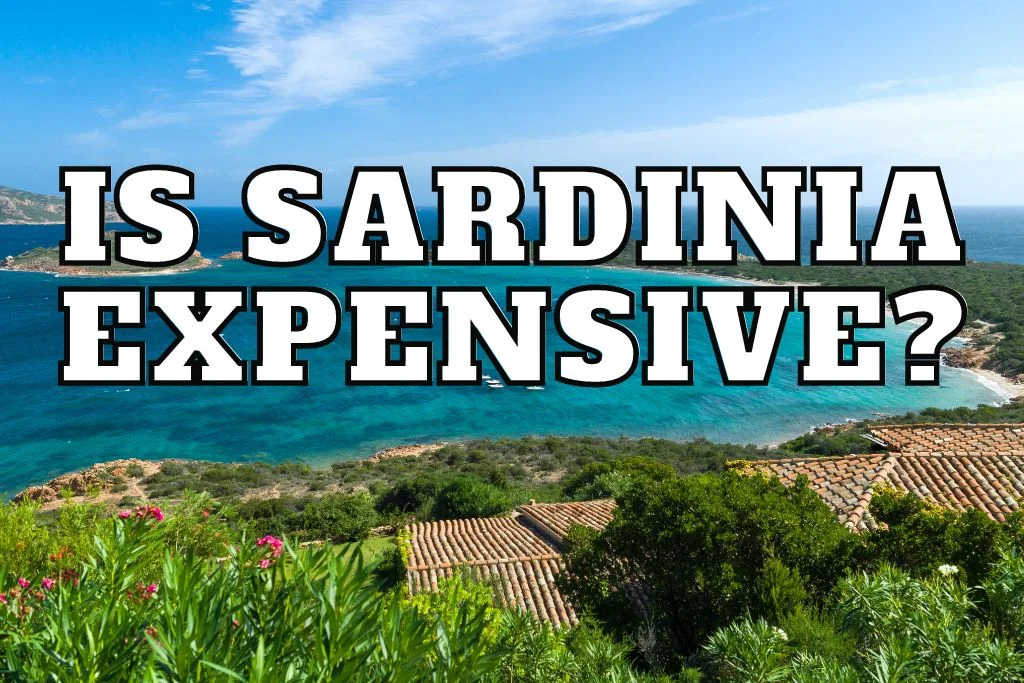
When planning your Sardinia Itinerary, one of the key considerations is the cost of your trip. Sardinia, known for its stunning beaches, rich history, and vibrant culture, can be both a luxurious and budget-friendly destination. Understanding the costs involved will help you plan effectively and make the most of your visit. In this guide, we’ll break down the expenses you can expect, from accommodation and dining to activities and transportation, to help you determine if Sardinia is expensive to visit.
1. Accommodation Costs
Luxury Hotels
- Cost: €150-€400 per night.
- Examples: Cervo Hotel in Costa Smeralda, Villa Las Tronas in Alghero.
Mid-Range Hotels
- Cost: €80-€150 per night.
- Examples: Hotel Panorama in Olbia, Hotel Duomo in Oristano.
Budget Hotels and Guesthouses
- Cost: €40-€80 per night.
- Examples: Hotel Tonic in Cagliari, A Casa di Amici in Alghero.
Agriturismi (Farm Stays)
- Cost: €50-€100 per night.
- Benefits: Often include meals and a unique cultural experience.
2. Dining Costs
Fine Dining
- Cost: €50-€100 per person for a multi-course meal with wine.
- Examples: Ristorante Sa Cardiga e Su Schironi in Cagliari, Ristorante Il Pescatore in Costa Smeralda.
Mid-Range Restaurants
- Cost: €20-€40 per person for a meal with wine.
- Examples: Trattoria da Gianni in Cagliari, Osteria del Porto in Alghero.
Budget Eateries and Street Food
- Cost: €5-€15 per person.
- Examples: Antica Focacceria San Francesco in Palermo, Friggitoria Chiluzzo in Cagliari.
3. Transportation Costs
Car Rental
- Cost: €30-€50 per day for a standard car; €200-€350 per week.
- Fuel: €1.70-€1.90 per liter for petrol; €1.60-€1.80 per liter for diesel.
Public Transport
- Buses: €2-€5 per trip.
- Trains: €5-€20 for regional journeys.
Taxis
- Cost: €10-€20 for short distances within cities.
4. Activity Costs
Beaches
- Cost: Free for public beaches; €10-€20 for private beach clubs.
Boat Tours
- Cost: €30-€100 per person, depending on the duration and type of tour.
Historical Sites and Museums
- Cost: €5-€15 per person.
- Examples: Su Nuraxi di Barumini, Neptune’s Grotto.
Hiking and Outdoor Activities
- Cost: Free for public trails; €20-€50 for guided tours.
5. Miscellaneous Costs
Souvenirs
- Cost: €10-€50, depending on the item.
Shopping
- Cost: Varies widely; local markets offer affordable options, while designer boutiques in Costa Smeralda can be pricey.
Nightlife
- Cost: €5-€15 for drinks; €10-€30 for club entry.
Estimated Daily Budget
Budget Traveler
- Accommodation: €40-€80.
- Food: €15-€30.
- Transport: €10-€20.
- Activities: €10-€20.
- Total: €75-€150 per day.
Mid-Range Traveler
- Accommodation: €80-€150.
- Food: €30-€60.
- Transport: €20-€40.
- Activities: €20-€50.
- Total: €150-€300 per day.
Luxury Traveler
- Accommodation: €150-€400.
- Food: €60-€150.
- Transport: €50-€100.
- Activities: €50-€150.
- Total: €300-€800 per day.
Why Sardinia Can Be Both Affordable and Luxurious
Sardinia offers a range of options to suit different budgets, from budget-friendly accommodations and eateries to luxurious resorts and fine dining. By planning carefully and making informed choices, you can enjoy a memorable trip without breaking the bank. Including a mix of free and paid activities in your Sardinia Itinerary ensures a balanced and enjoyable experience.
In Conclusion
Sardinia can be as expensive or as affordable as you make it. Understanding the costs involved helps you budget effectively and make the most of your trip. Whether you’re a budget traveler or seeking a luxurious getaway, Sardinia offers something for everyone. So, plan wisely, pack accordingly, and get ready to explore the stunning landscapes and vibrant culture of Sardinia.
A Week in Sardinia: Map and Itinerary
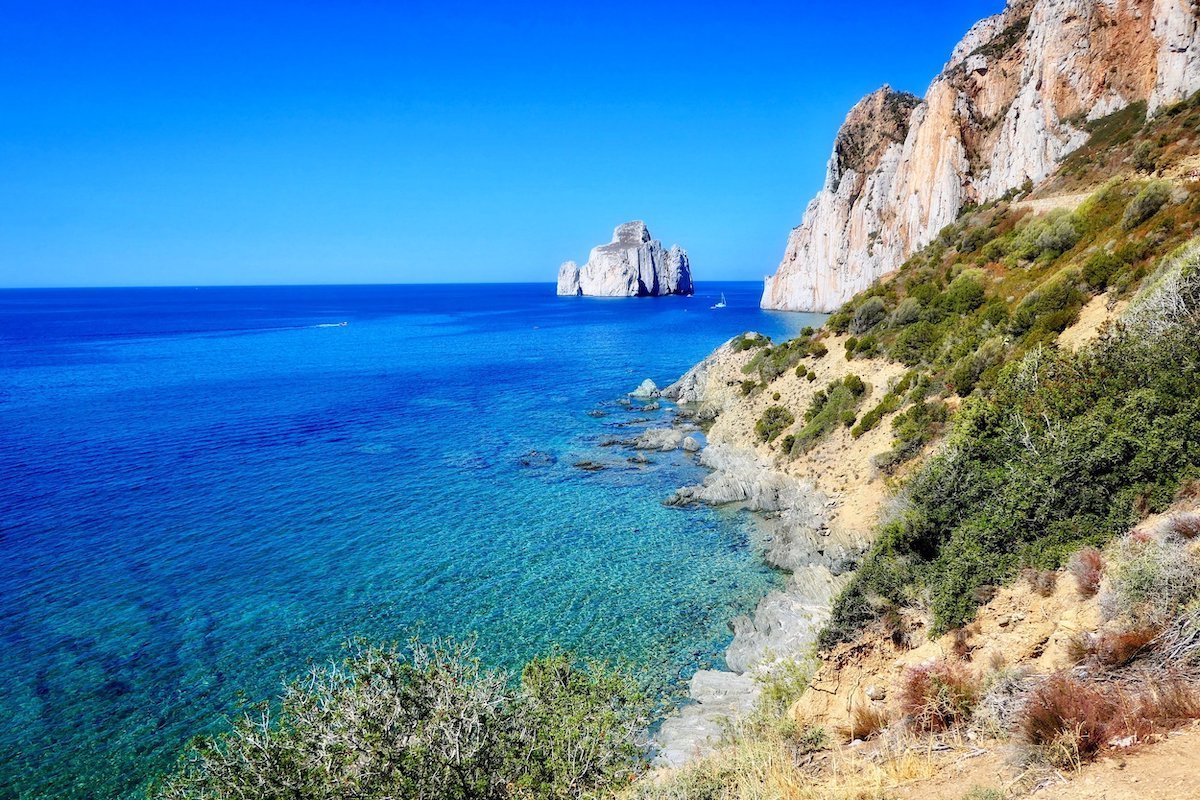
Here’s our Sardinia Itinerary for one week, covering the island’s highlights:
Day 1: Cagliari
Kicking off your Sardinia Itinerary in Cagliari, the island’s vibrant capital, is a fantastic way to immerse yourself in Sardinia’s rich history, culture, and cuisine. Nestled on the southern coast, Cagliari offers a mix of ancient ruins, charming neighborhoods, and stunning views of the Mediterranean Sea. Here’s a detailed guide to making the most of your first day in this captivating city.
Morning: Explore the Historic Castello District
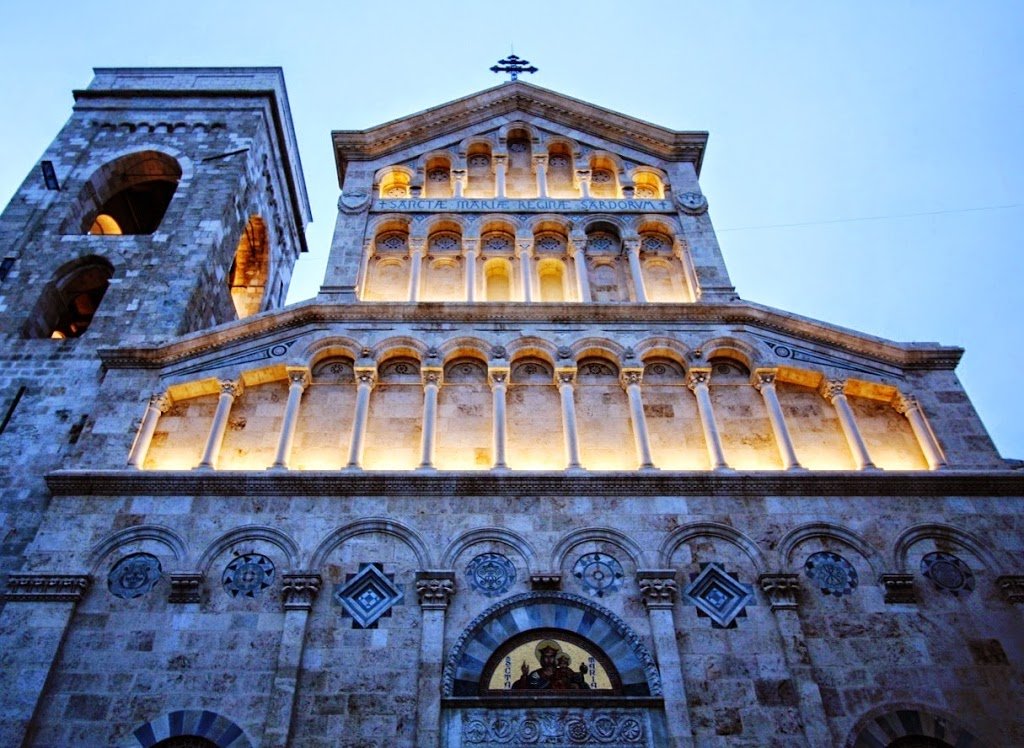
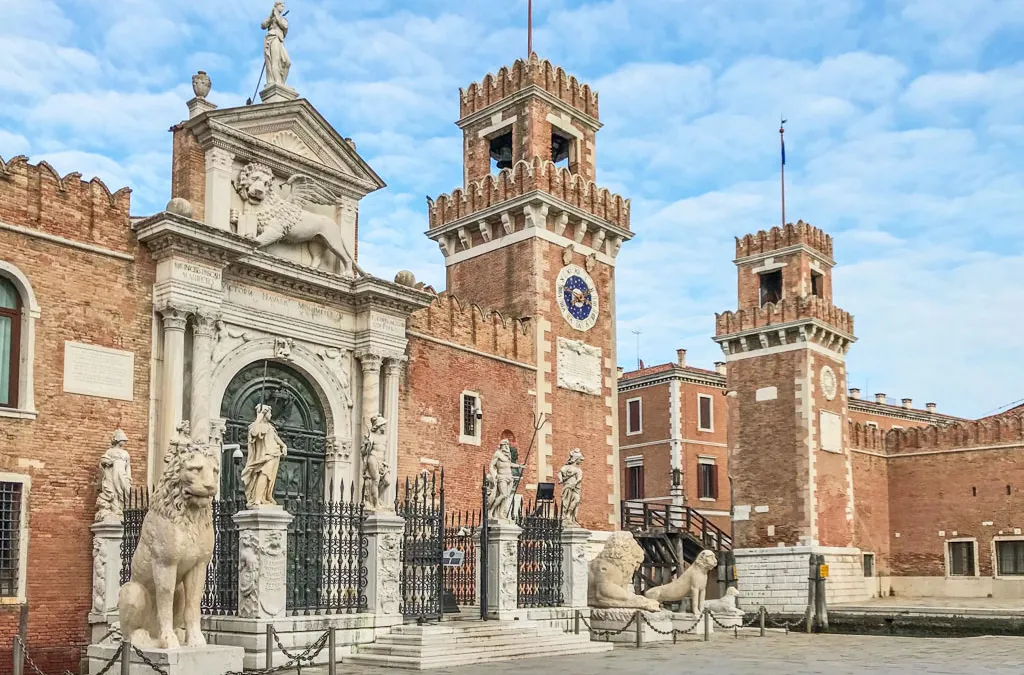
1. Castello District
- What to See: Wander through the narrow, cobblestone streets of this medieval quarter, perched on a hill overlooking the city.
- Highlights:
- Cagliari Cathedral (Cattedrale di Santa Maria): Admire the stunning Gothic architecture and intricate frescoes.
- Bastione di Saint Remy: Climb to the top for panoramic views of the city and harbor.
- Tower of San Pancrazio: One of the city’s ancient Pisan towers, offering more breathtaking views.
2. Roman Amphitheatre
- What to See: Explore the well-preserved ruins of this ancient amphitheater, which once hosted gladiatorial games.
- Tips: Visit early to avoid crowds and enjoy the serene atmosphere.
Afternoon: Discover Local Culture and Cuisine
3. Marina District
- What to Do: Stroll through this lively neighborhood, known for its colorful buildings, bustling markets, and vibrant atmosphere.
- Highlights:
- San Benedetto Market: One of the largest markets in Sardinia, offering fresh produce, seafood, and local delicacies.
- Lunch: Enjoy a meal at Ristorante Sa Cardiga e Su Schironi, known for its traditional Sardinian dishes.
4. National Archaeological Museum
- What to See: Discover artifacts from Sardinia’s Nuragic, Phoenician, and Roman periods.
- Highlights:
- Nuragic Bronzetti: Small bronze statues depicting ancient Sardinian life.
- Roman Mosaics: Intricate mosaics from Roman villas.
Evening: Sunset and Dinner with a View
5. Poetto Beach
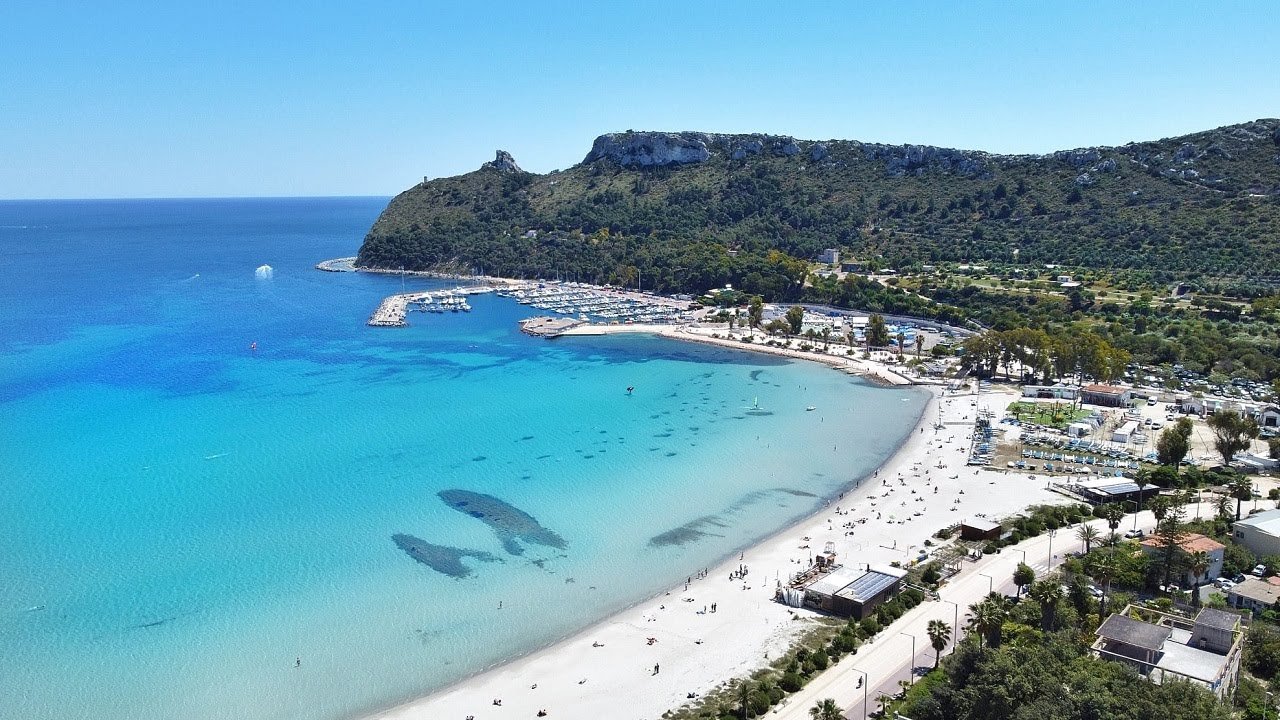
- What to Do: Head to this popular beach for a relaxing evening by the sea.
- Highlights:
- Sunset: Watch the sun dip below the horizon, casting a golden glow over the water.
- Dinner: Dine at Ristorante Su Cumbidu, offering fresh seafood and stunning views.
6. Nightlife in Marina District
- What to Do: If you’re up for some nightlife, return to the Marina District for a drink at one of the many bars or cafes.
- Highlights:
- Caffè Libarium Nostrum: A cozy wine bar with a great selection of local wines.
- Live Music: Check out venues like Caffè degli Spiriti for live performances.
Where to Stay in Cagliari 🏨
Luxury
- T Hotel Cagliari: A modern hotel with luxurious amenities and a central location.
Mid-Range
- Hotel Regina Margherita: A comfortable hotel with a rooftop terrace offering panoramic views.
Budget
- Hostel Marina: A budget-friendly option with a great location in the Marina District.
Why Cagliari is a Great Start to Your Sardinia Itinerary
Cagliari offers a perfect introduction to Sardinia’s rich history, vibrant culture, and stunning landscapes. By exploring its historic districts, savoring local cuisine, and enjoying its beautiful beaches, you’ll set the tone for an unforgettable trip. Including Cagliari in your Sardinia Itinerary ensures a well-rounded and enriching experience.
Find the best hotel deals for your next trip! Compare prices and book your stay on
Hostelworld: Meet fellow travellers — save on stays, Backpacker-friendly hostels, verified reviews and social stays that fit your budget and vibe.
Tripadvisor: Plan with confidence — reviews you can trust, Restaurants, hotels and experiences with millions of traveller reviews to help you choose what’s best.
Traveloka: Flights, hotels & more — simple booking, One-stop travel platform for great flight fares, hotel deals and local activities across Asia and beyond.
Your first day in Cagliari is all about immersing yourself in the city’s charm and history. From the medieval streets of the Castello District to the bustling Marina District and the serene Poetto Beach, Cagliari offers a diverse array of experiences. So, lace up your walking shoes, bring your camera, and get ready to explore the vibrant capital of Sardinia.
Day 2: Costa Rei and Villasimius
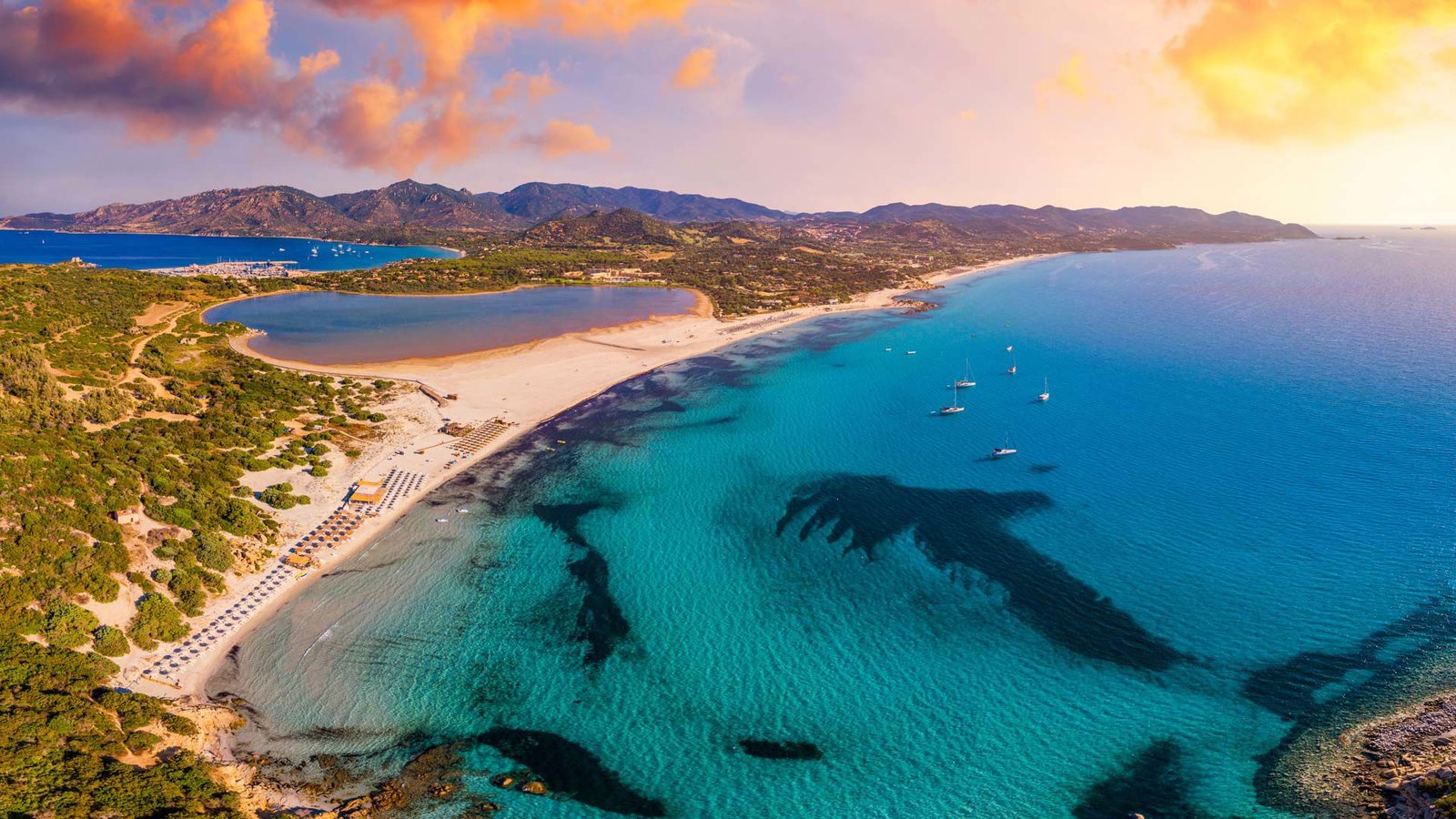
On the second day of your Sardinia Itinerary, head to the southeastern coast to explore the stunning beaches of Costa Rei and the charming town of Villasimius. Known for their crystal-clear waters, golden sands, and natural beauty, these destinations are perfect for relaxation and outdoor activities. Here’s a detailed guide to making the most of your day in this breathtaking part of Sardinia.
Morning: Relax on Costa Rei’s Beaches
1. Costa Rei Beach
- What to Do: Spend your morning relaxing on one of Sardinia’s most beautiful beaches.
- Highlights:
- Crystal-Clear Waters: Perfect for swimming and snorkeling.
- Golden Sands: Ideal for sunbathing and beach games.
- Beach Clubs: Rent sunbeds and umbrellas for added comfort.
2. Scoglio di Peppino
- What to Do: Take a short walk to this scenic rock formation, perfect for photos and exploring tide pools.
- Tips: Wear water shoes for better grip on the rocks.
Afternoon: Explore Villasimius
3. Capo Carbonara Marine Protected Area
- What to Do: Visit this protected area, known for its pristine waters and diverse marine life.
- Highlights:
- Snorkeling and Diving: Explore underwater caves and coral reefs.
- Boat Tours: Join a guided boat tour to discover hidden coves and secluded beaches.
4. Villasimius Town
- What to Do: Stroll through the charming streets of Villasimius, known for its laid-back atmosphere and local shops.
- Highlights:
- Lunch: Enjoy a meal at Ristorante La Perla, offering fresh seafood and traditional Sardinian dishes.
- Local Markets: Browse for souvenirs and local crafts.
Evening: Sunset and Dinner by the Sea
5. Porto Giunco Beach
- What to Do: Head to Porto Giunco for a relaxing evening by the sea.
- Highlights:
- Sunset: Watch the sun set over the Mediterranean, casting a golden glow over the water.
- Dinner: Dine at Ristorante Su Giganti, known for its seafood and stunning views.
6. Nightlife in Villasimius
- What to Do: If you’re up for some nightlife, explore the bars and cafes in Villasimius.
- Highlights:
- Café del Mare: A popular spot for cocktails and live music.
- Local Bars: Enjoy a drink at one of the many bars along the waterfront.
Where to Stay in Villasimius
Luxury
- Hotel Stella Maris: A luxurious beachfront hotel with stunning views and top-notch amenities.
Mid-Range
- Hotel Simius Playa: A comfortable hotel with a great location near the beach.
Budget
- B&B Villasimius: A budget-friendly option with a cozy atmosphere and friendly hosts.
Why Costa Rei and Villasimius are Highlights of Your Sardinia Itinerary
Costa Rei and Villasimius offer some of the most beautiful beaches and natural landscapes in Sardinia. By including these destinations in your Sardinia Itinerary, you’ll enjoy a perfect blend of relaxation, outdoor activities, and local culture. Whether you’re lounging on the beach, exploring marine life, or savoring fresh seafood, these destinations promise an unforgettable experience.
Your second day in Sardinia is all about enjoying the island’s natural beauty and laid-back charm. From the pristine beaches of Costa Rei to the vibrant town of Villasimius, this part of your Sardinia Itinerary offers a perfect mix of relaxation and exploration. So, pack your swimsuit, bring your snorkeling gear, and get ready to discover the stunning southeastern coast of Sardinia. Buon viaggio!
Day 3: Su Nuraxi and Oristano
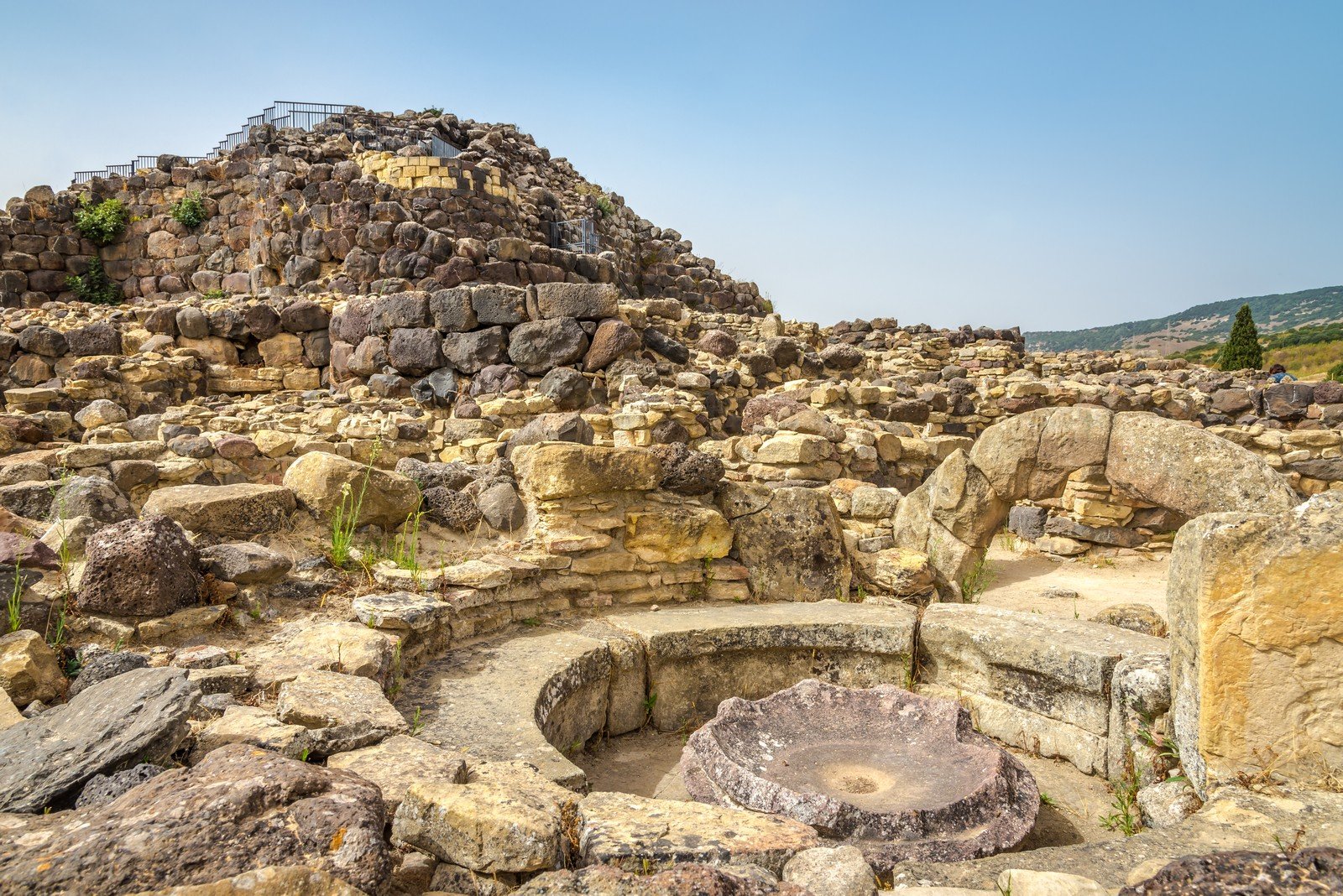
On the third day of your Sardinia Itinerary, delve into the island’s ancient history and charming towns by visiting the Su Nuraxi archaeological site and the medieval town of Oristano. These destinations offer a fascinating glimpse into Sardinia’s rich cultural heritage and provide a perfect blend of history, architecture, and local charm. Here’s a detailed guide to making the most of your day exploring these captivating locations.
Morning: Explore Su Nuraxi di Barumini
1. Su Nuraxi di Barumini
- What to See: This UNESCO World Heritage Site is one of the most important and well-preserved Nuragic complexes in Sardinia.
- Highlights:
- Central Tower: The main tower, or nuraghe, stands at the center of the complex and offers stunning views of the surrounding countryside.
- Village Ruins: Explore the remains of the ancient village, including huts, wells, and defensive walls.
- Guided Tours: Join a guided tour to learn about the history and significance of the site.
2. Casa Zapata Museum
- What to See: Located near Su Nuraxi, this museum offers additional insights into the Nuragic civilization.
- Highlights:
- Exhibits: Artifacts, models, and multimedia displays that bring the ancient culture to life.
- Archaeological Park: Explore the outdoor exhibits and reconstructed huts.
Afternoon: Discover Oristano
3. Oristano Town
- What to Do: Stroll through the charming streets of Oristano, known for its medieval architecture and vibrant atmosphere.
- Highlights:
- Piazza Eleonora: The main square, named after the town’s heroine, Eleonora d’Arborea.
- Torre di Mariano II: A medieval tower offering panoramic views of the town.
- Lunch: Enjoy a meal at Trattoria Gino, known for its traditional Sardinian dishes.
4. Oristano Cathedral
- What to See: Visit this beautiful cathedral, which features a mix of Gothic, Baroque, and Neoclassical styles.
- Highlights:
- Interior: Admire the intricate frescoes, marble columns, and stunning altarpieces.
- Bell Tower: Climb the tower for a bird’s-eye view of the town and surrounding countryside.
Evening: Sunset and Dinner in Oristano
5. Marina di Torre Grande
Book top-rated tours and attractions on :
Viator (Best for curated global tours)
GetYourGuide (Skip-the-line tickets & local guides)
Klook (Great for Asia adventures & discounts)
- What to Do: Head to this nearby coastal area for a relaxing evening by the sea.
- Highlights:
- Sunset: Watch the sun set over the Mediterranean, casting a golden glow over the water.
- Dinner: Dine at Ristorante Sa Peschiera ‘e Mar ‘e Pontis, offering fresh seafood and stunning views.
6. Nightlife in Oristano
- What to Do: If you’re up for some nightlife, explore the bars and cafes in Oristano.
- Highlights:
- Café del Teatro: A popular spot for cocktails and live music.
- Local Bars: Enjoy a drink at one of the many bars along the waterfront.
Where to Stay in Oristano
Luxury
- Hotel Duomo: A luxurious hotel with elegant rooms and a central location.
Mid-Range
- Hotel Regina d’Arborea: A comfortable hotel with modern amenities and a friendly atmosphere.
Budget
- B&B Oristano: A budget-friendly option with a cozy atmosphere and convenient location.
Why Su Nuraxi and Oristano are Highlights of Your Sardinia Itinerary
Su Nuraxi and Oristano offer a fascinating blend of ancient history and charming town life. By including these destinations in your Sardinia Itinerary, you’ll gain a deeper understanding of the island’s rich cultural heritage and enjoy a mix of exploration and relaxation. Whether you’re marveling at ancient ruins, strolling through medieval streets, or savoring local cuisine, these destinations promise an unforgettable experience.
Your third day in Sardinia is all about immersing yourself in the island’s history and charm. From the ancient Nuragic ruins of Su Nuraxi to the medieval streets of Oristano, this part of your Sardinia Itinerary offers a perfect mix of cultural exploration and relaxation. So, pack your walking shoes, bring your camera, and get ready to discover the rich heritage of Sardinia.
Day 4: Bosa and Alghero
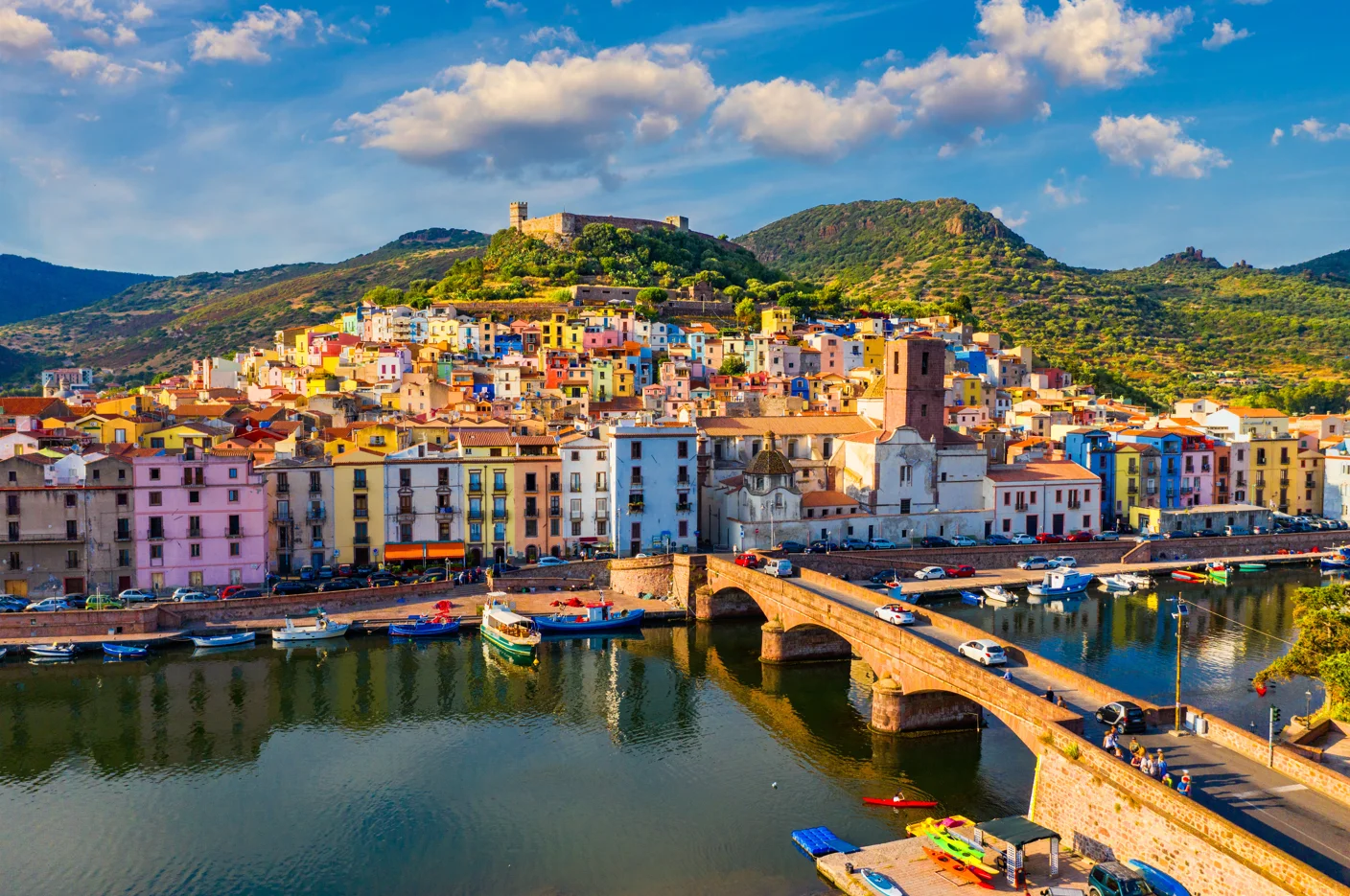
On the fourth day of your Sardinia Itinerary, explore the picturesque town of Bosa and the charming coastal city of Alghero. Known for their colorful streets, rich history, and stunning coastal views, these destinations offer a perfect blend of culture, relaxation, and natural beauty. Here’s a detailed guide to making the most of your day in these captivating locations.
Morning: Discover the Colorful Town of Bosa
1. Bosa Town
- What to Do: Stroll through the charming streets of Bosa, known for its colorful houses and vibrant atmosphere.
- Highlights:
- Malaspina Castle: Perched on a hill, this medieval castle offers panoramic views of the town and the Temo River.
- Bosa Cathedral: Admire the beautiful Baroque architecture and intricate frescoes.
- Lunch: Enjoy a meal at Ristorante Sa Pischedda, known for its traditional Sardinian dishes.
2. Temo River
- What to Do: Take a leisurely walk along the river, or rent a kayak to explore the scenic waterway.
- Highlights:
- Boat Tours: Join a guided boat tour to discover the river’s hidden gems.
- Photography: Capture the picturesque views of the colorful houses and lush greenery.
Afternoon: Explore Alghero
3. Alghero Old Town
- What to Do: Wander through the cobblestone streets of the historic center, known for its Catalan influence.
- Highlights:
- Alghero Cathedral: Visit this beautiful cathedral, featuring a mix of Gothic and Renaissance styles.
- Piazza Civica: The main square, perfect for people-watching and enjoying a coffee.
- Lunch: Dine at Ristorante Il Pescatore, offering fresh seafood and stunning views.
4. Neptune’s Grotto
- What to Do: Visit this stunning sea cave, accessible by boat or a scenic staircase.
- Highlights:
- Guided Tours: Explore the cave’s impressive stalactites and stalagmites with a knowledgeable guide.
- Boat Tours: Join a boat tour to discover the cave and other coastal attractions.
Evening: Sunset and Dinner in Alghero
5. Alghero Promenade
- What to Do: Take a leisurely stroll along the waterfront promenade, known for its stunning views and lively atmosphere.
- Highlights:
- Sunset: Watch the sun dip below the horizon, casting a golden glow over the water.
- Dinner: Dine at Ristorante La Lepanto, known for its seafood and romantic ambiance.
6. Nightlife in Alghero
- What to Do: If you’re up for some nightlife, explore the bars and cafes in Alghero.
- Highlights:
- Café Latino: A popular spot for cocktails and live music.
- Local Bars: Enjoy a drink at one of the many bars along the waterfront.
Where to Stay in Alghero
Luxury
- Villa Las Tronas: A luxurious hotel with stunning sea views and top-notch amenities.
Mid-Range
- Hotel Carlos V: A comfortable hotel with a great location near the old town.
Budget
- B&B Alghero: A budget-friendly option with a cozy atmosphere and friendly hosts.
Why Bosa and Alghero are Highlights of Your Sardinia Itinerary
Bosa and Alghero offer a perfect blend of history, culture, and natural beauty. By including these destinations in your Sardinia Itinerary, you’ll enjoy a mix of colorful streets, stunning coastal views, and rich cultural experiences. Whether you’re exploring ancient castles, relaxing by the sea, or savoring local cuisine, these destinations promise an unforgettable experience.
Your fourth day in Sardinia is all about immersing yourself in the island’s charm and beauty. From the colorful streets of Bosa to the historic old town of Alghero, this part of your Sardinia Itinerary offers a perfect mix of exploration and relaxation. So, pack your walking shoes, bring your camera, and get ready to discover the vibrant culture and stunning landscapes of Sardinia.
Day 5: Costa Smeralda
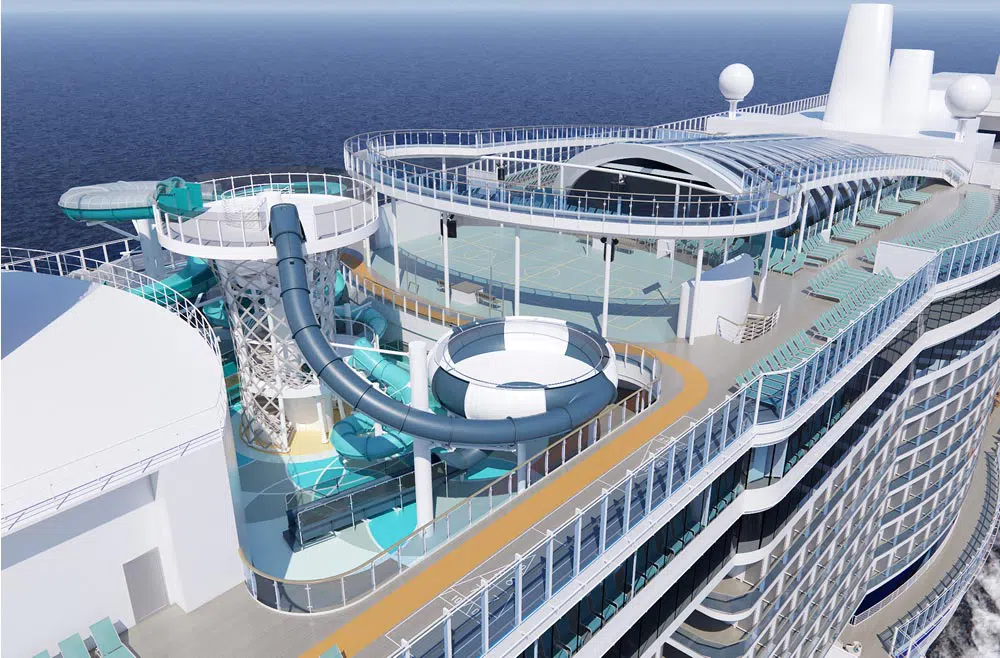
On the fifth day of your Sardinia Itinerary, immerse yourself in the glamour and natural beauty of the Costa Smeralda. Known for its turquoise waters, pristine beaches, and luxurious resorts, this stretch of coastline in northeastern Sardinia is a must-visit for any traveler. Here’s a detailed guide to making the most of your day in this stunning part of the island.
Morning: Relax on Costa Smeralda’s Beaches
1. Spiaggia del Principe (Prince’s Beach)
- What to Do: Start your day at one of the most beautiful beaches in Costa Smeralda.
- Highlights:
- Crystal-Clear Waters: Perfect for swimming and snorkeling.
- Golden Sands: Ideal for sunbathing and beach games.
- Beach Clubs: Rent sunbeds and umbrellas for added comfort.
2. Cala Brandinchi
- What to Do: Known as the “Little Tahiti,” this beach offers shallow, turquoise waters and fine white sand.
- Highlights:
- Family-Friendly: Safe for children due to its shallow waters.
- Scenic Views: Surrounded by lush greenery and granite rocks.
Afternoon: Explore Porto Cervo and the Maddalena Archipelago
3. Porto Cervo
- What to Do: Visit the heart of Costa Smeralda, known for its luxury yachts, high-end shops, and elegant architecture.
- Highlights:
- Piazzetta: The main square, perfect for people-watching and enjoying a coffee.
- Stella Maris Church: A unique church with a modern design and stunning views.
- Lunch: Dine at Ristorante Il Pescatore, offering fresh seafood and Mediterranean cuisine.
4. Maddalena Archipelago
- What to Do: Take a boat tour to explore this group of islands, known for their pristine beaches and crystal-clear waters.
- Highlights:
- Spiaggia Rosa (Pink Beach): Famous for its pink sand and turquoise waters.
- Snorkeling and Diving: Discover vibrant marine life and underwater caves.
- Island Hopping: Visit multiple islands, including La Maddalena and Caprera.
Evening: Sunset and Dinner in Porto Rotondo
5. Porto Rotondo
- What to Do: End your day in this charming marina town, known for its elegant atmosphere and stunning views.
- Highlights:
- Marina: Stroll along the waterfront and admire the luxury yachts.
- Sunset: Watch the sun set over the Mediterranean, casting a golden glow over the water.
- Dinner: Dine at Ristorante Il Pomodoro, known for its Italian cuisine and romantic ambiance.
6. Nightlife in Porto Cervo
- What to Do: If you’re up for some nightlife, explore the bars and clubs in Porto Cervo.
- Highlights:
- Billionaire Club: A famous nightclub offering a glamorous experience.
- Local Bars: Enjoy a drink at one of the many bars along the waterfront.
Where to Stay in Costa Smeralda
Luxury
- Cervo Hotel: A luxurious beachfront hotel with stunning views and top-notch amenities.
Mid-Range
- Hotel Abi d’Oru: A comfortable hotel with a great location near the beach.
Budget
- B&B Costa Smeralda: A budget-friendly option with a cozy atmosphere and friendly hosts.
Why Costa Smeralda is a Highlight of Your Sardinia Itinerary
Costa Smeralda offers a perfect blend of natural beauty and luxury. By including this destination in your Sardinia Itinerary, you’ll enjoy some of the most beautiful beaches and glamorous experiences the island has to offer. Whether you’re lounging on the beach, exploring the Maddalena Archipelago, or savoring fine dining, Costa Smeralda promises an unforgettable experience.
Your fifth day in Sardinia is all about indulging in the island’s natural beauty and luxurious charm. From the pristine beaches of Costa Smeralda to the elegant towns of Porto Cervo and Porto Rotondo, this part of your Sardinia Itinerary offers a perfect mix of relaxation and exploration. So, pack your swimsuit, bring your camera, and get ready to discover the stunning northeastern coast of Sardinia.
Day 6: Cala Gonone and Gennargentu National Park
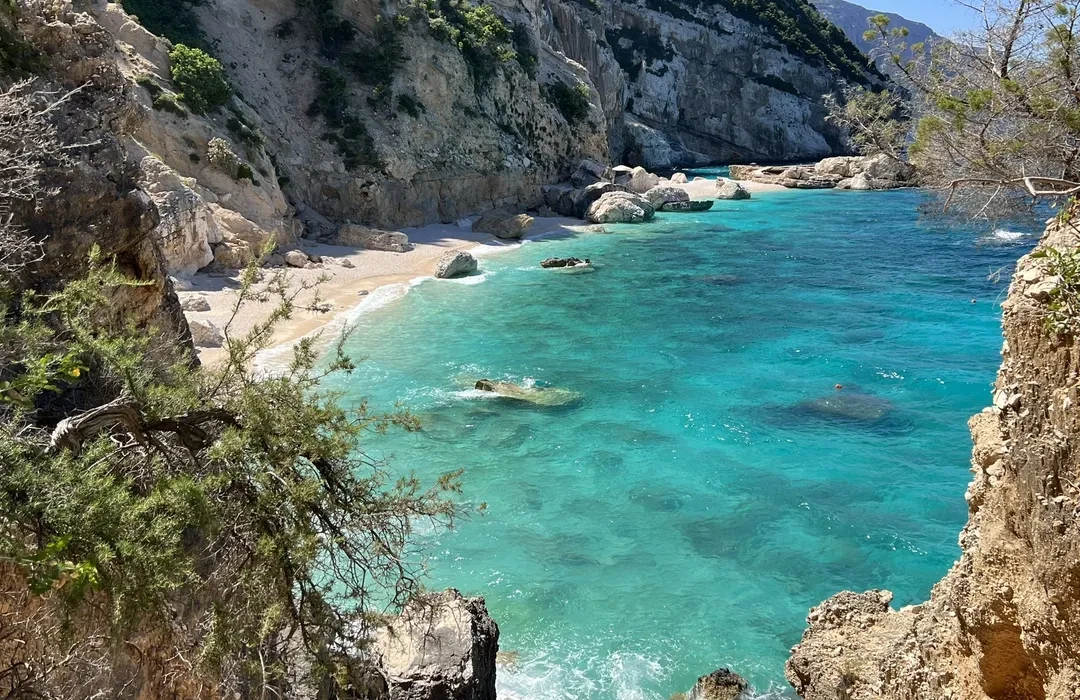
On the sixth day of your Sardinia Itinerary, venture into the rugged beauty of Cala Gonone and Gennargentu National Park. Located on the eastern coast of Sardinia, these destinations offer a mix of stunning coastal views, dramatic mountain landscapes, and outdoor adventures. Here’s a detailed guide to making the most of your day exploring these breathtaking locations.
Morning: Explore Cala Gonone’s Sea Caves and Beaches
1. Cala Gonone Town
- What to Do: Start your day in this charming coastal town, known for its stunning views and access to some of Sardinia’s most beautiful beaches.
- Highlights:
- Marina: Stroll along the waterfront and admire the boats and yachts.
- Local Cafes: Enjoy a coffee and pastry at a seaside cafe.
2. Boat Tour to the Sea Caves
- What to Do: Join a guided boat tour to explore the famous sea caves along the coast.
- Highlights:
- Grotta del Bue Marino: One of the most impressive sea caves, known for its stalactites and stalagmites.
- Cala Luna: A stunning beach surrounded by limestone cliffs, accessible only by boat or a challenging hike.
- Snorkeling: Discover vibrant marine life in the crystal-clear waters.
Afternoon: Hike in Gennargentu National Park
3. Gennargentu National Park
- What to Do: Head inland to explore Sardinia’s largest national park, known for its rugged mountains and diverse wildlife.
- Highlights:
- Hiking Trails: Choose from a variety of trails, ranging from easy walks to challenging hikes.
- Punta La Marmora: The highest peak in Sardinia, offering panoramic views of the island.
- Wildlife Spotting: Look for mouflon (wild sheep), golden eagles, and other native species.
4. Lunch in the Mountains
- What to Do: Enjoy a picnic or dine at a mountain hut, savoring local specialties like porceddu (roast suckling pig) and culurgiones (stuffed pasta).
- Highlights:
- Scenic Views: Dine with breathtaking views of the mountains and valleys.
- Local Flavors: Taste traditional Sardinian dishes made with fresh, local ingredients.
Evening: Sunset and Dinner in Cala Gonone
5. Cala Gonone Beach
- What to Do: Return to Cala Gonone for a relaxing evening by the sea.
- Highlights:
- Sunset: Watch the sun dip below the horizon, casting a golden glow over the water.
- Dinner: Dine at Ristorante Il Pescatore, offering fresh seafood and stunning views.
6. Nightlife in Cala Gonone
- What to Do: If you’re up for some nightlife, explore the bars and cafes in Cala Gonone.
- Highlights:
- Café del Mare: A popular spot for cocktails and live music.
- Local Bars: Enjoy a drink at one of the many bars along the waterfront.
Where to Stay in Cala Gonone
Luxury
- Hotel Costa Dorada: A luxurious beachfront hotel with stunning views and top-notch amenities.
Mid-Range
- Hotel Bue Marino: A comfortable hotel with a great location near the beach.
Budget
- B&B Cala Gonone: A budget-friendly option with a cozy atmosphere and friendly hosts.
Why Cala Gonone and Gennargentu National Park are Highlights of Your Sardinia Itinerary
Cala Gonone and Gennargentu National Park offer a perfect blend of coastal beauty and mountain adventure. By including these destinations in your Sardinia Itinerary, you’ll enjoy a mix of stunning sea caves, pristine beaches, and rugged mountain landscapes. Whether you’re exploring by boat, hiking in the mountains, or relaxing by the sea, these destinations promise an unforgettable experience.
Your sixth day in Sardinia is all about immersing yourself in the island’s natural beauty and outdoor adventures. From the stunning sea caves of Cala Gonone to the rugged trails of Gennargentu National Park, this part of your Sardinia Itinerary offers a perfect mix of exploration and relaxation. So, pack your hiking boots, bring your camera, and get ready to discover the breathtaking landscapes of eastern Sardinia.
Day 7: Olbia and Departure

On the final day of your Sardinia Itinerary, explore the charming city of Olbia before heading to the airport for your departure. Known for its rich history, vibrant culture, and convenient location, Olbia offers a perfect blend of relaxation and exploration to end your trip. Here’s a detailed guide to making the most of your day in this captivating city.
Morning: Explore Olbia’s Historic Sites
1. Basilica of San Simplicio
- What to See: Visit this ancient Romanesque church, one of the most important religious sites in Sardinia.
- Highlights:
- Architecture: Admire the simple yet elegant design and intricate stone carvings.
- History: Learn about the church’s significance and its role in Olbia’s history.
2. Archaeological Museum of Olbia
- What to See: Discover artifacts from Olbia’s ancient past, including Roman and Phoenician relics.
- Highlights:
- Exhibits: Explore displays of ancient pottery, coins, and tools.
- Interactive Displays: Engage with multimedia exhibits that bring history to life.
3. Corso Umberto I
- What to Do: Stroll along Olbia’s main shopping street, known for its boutiques, cafes, and vibrant atmosphere.
- Highlights:
- Shopping: Browse for souvenirs, local crafts, and designer goods.
- Lunch: Enjoy a meal at Ristorante Gallura, offering traditional Sardinian dishes.
Afternoon: Relax by the Sea
4. Pittulongu Beach
- What to Do: Head to this beautiful beach for a relaxing afternoon by the sea.
- Highlights:
- Crystal-Clear Waters: Perfect for swimming and snorkeling.
- Golden Sands: Ideal for sunbathing and beach games.
- Beach Clubs: Rent sunbeds and umbrellas for added comfort.
5. Molos Beach
- What to Do: Another great option for a beach day, located closer to the city center.
- Highlights:
- Scenic Views: Enjoy views of the harbor and nearby islands.
- Water Sports: Try paddleboarding, kayaking, or windsurfing.
Evening: Sunset and Dinner in Olbia
6. Olbia Harbor
- What to Do: Take a leisurely stroll along the harbor, known for its stunning views and lively atmosphere.
- Highlights:
- Sunset: Watch the sun dip below the horizon, casting a golden glow over the water.
- Dinner: Dine at Ristorante Terrazza Danieli, offering fresh seafood and Mediterranean cuisine.
7. Nightlife in Olbia
- What to Do: If you’re up for some nightlife, explore the bars and cafes in Olbia.
- Highlights:
- Café del Teatro: A popular spot for cocktails and live music.
- Local Bars: Enjoy a drink at one of the many bars along the waterfront.
Where to Stay in Olbia
Luxury
- Hotel Panorama: A luxurious hotel with stunning views and top-notch amenities.
Mid-Range
- Hotel Jazz: A comfortable hotel with a great location near the city center.
Budget
- B&B Olbia: A budget-friendly option with a cozy atmosphere and friendly hosts.
Why Olbia is a Perfect End to Your Sardinia Itinerary
Find the best hotel deals for your next trip! Compare prices and book your stay on
Hostelworld: Meet fellow travellers — save on stays, Backpacker-friendly hostels, verified reviews and social stays that fit your budget and vibe.
Tripadvisor: Plan with confidence — reviews you can trust, Restaurants, hotels and experiences with millions of traveller reviews to help you choose what’s best.
Traveloka: Flights, hotels & more — simple booking, One-stop travel platform for great flight fares, hotel deals and local activities across Asia and beyond.
Olbia offers a perfect blend of history, culture, and natural beauty, making it an ideal destination to conclude your Sardinia Itinerary. By exploring its historic sites, relaxing on its beautiful beaches, and savoring its delicious cuisine, you’ll end your trip on a high note. Whether you’re soaking in the last rays of sun or enjoying a final meal by the sea, Olbia promises an unforgettable experience.
Your final day in Sardinia is all about enjoying the best of Olbia before heading home. From the ancient Basilica of San Simplicio to the stunning beaches of Pittulongu and Molos, this part of your Sardinia Itinerary offers a perfect mix of relaxation and exploration. So, pack your bags, savor the last moments, and get ready to bid farewell to the beautiful island of Sardinia.
10 Things to Do in Sardinia
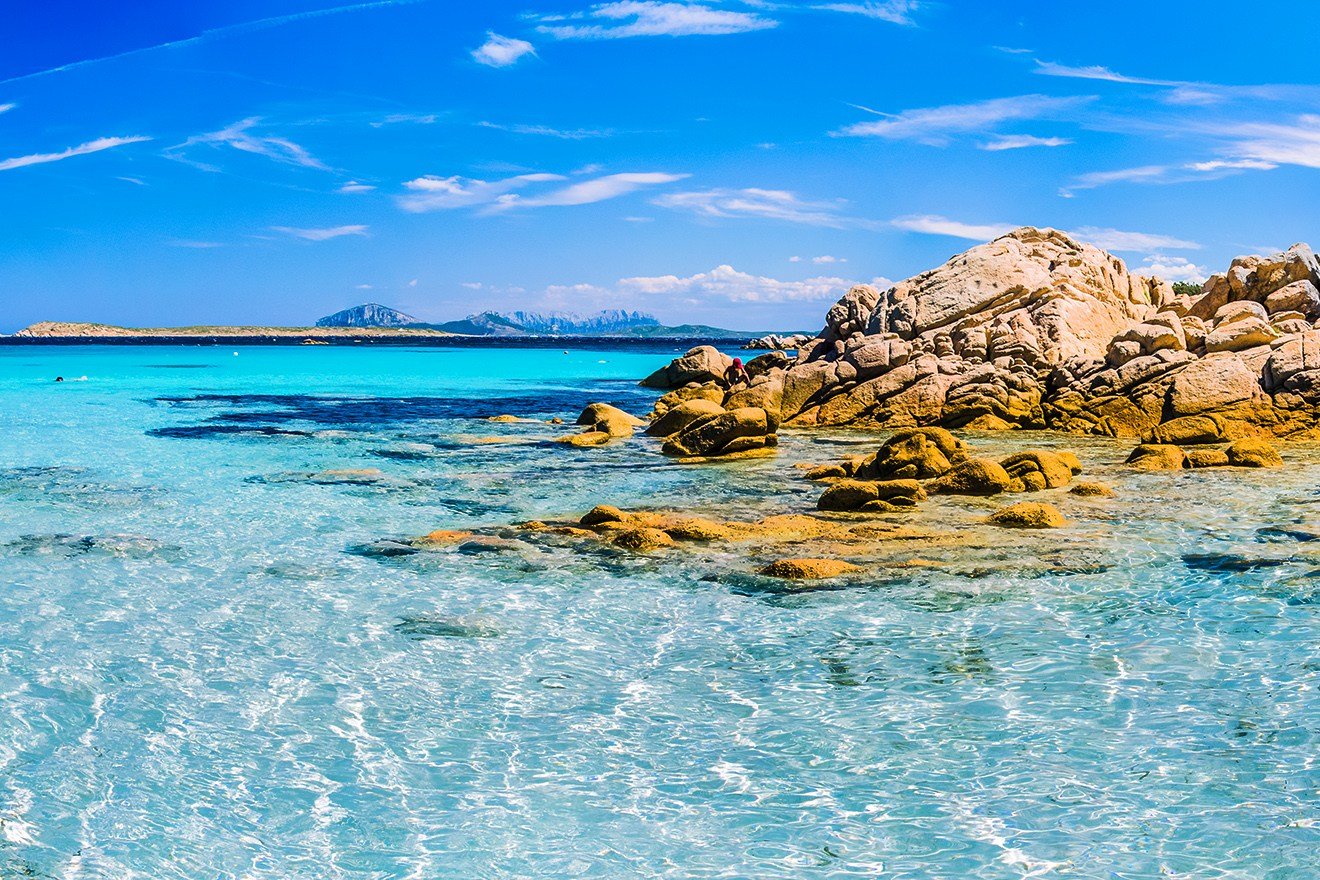
Relax on Costa Smeralda’s Beaches
When planning your Sardinia Itinerary, a visit to the Costa Smeralda is an absolute must. Known for its turquoise waters, pristine beaches, and luxurious resorts, this stretch of coastline in northeastern Sardinia is a paradise for beach lovers. Here’s a detailed guide to making the most of your time relaxing on Costa Smeralda’s beaches.
1. Spiaggia del Principe (Prince’s Beach)
Why Visit?
- Natural Beauty: Often considered one of the most beautiful beaches in Sardinia, Spiaggia del Principe offers crystal-clear waters and golden sands.
- Tranquility: Despite its popularity, the beach maintains a serene atmosphere, perfect for relaxation.
What to Do:
- Swimming and Snorkeling: The clear waters are ideal for swimming and exploring marine life.
- Sunbathing: Rent a sunbed and umbrella to relax in comfort.
- Beach Clubs: Enjoy a meal or drink at one of the beachside bars or restaurants.
Tips:
- Arrive Early: To secure a good spot, especially during peak season.
- Bring Snorkeling Gear: The underwater scenery is worth exploring.
2. Cala Brandinchi (Little Tahiti)
Why Visit?
- Shallow Waters: Perfect for families with children, as the water remains shallow for a long distance.
- Scenic Views: Surrounded by lush greenery and granite rocks, the beach offers stunning photo opportunities.
What to Do:
- Relax: The fine white sand and calm waters make it ideal for lounging.
- Water Sports: Try paddleboarding or kayaking.
- Picnic: Bring a picnic and enjoy the natural beauty.
Tips:
- Parking: Arrive early to find parking, as it can get crowded.
- Facilities: There are restrooms and a small bar for refreshments.
3. Rena Bianca Beach
Why Visit?
- Accessibility: Easily accessible from Santa Teresa Gallura, making it a convenient option.
- Clear Waters: The beach is known for its clear, shallow waters, perfect for swimming.
What to Do:
- Swimming: The calm waters are ideal for a refreshing dip.
- Snorkeling: Explore the vibrant marine life just offshore.
- Beach Walks: Take a leisurely stroll along the shoreline.
Tips:
- Facilities: There are sunbeds, umbrellas, and a beach bar available for rent.
- Nearby Attractions: Visit the nearby town of Santa Teresa Gallura for a meal or shopping.
4. Capriccioli Beach
Why Visit?
- Secluded Coves: The beach is divided into smaller coves, offering a more private experience.
- Natural Beauty: Surrounded by granite rocks and Mediterranean vegetation, the scenery is breathtaking.
What to Do:
- Relax: Find a quiet spot to unwind and enjoy the natural surroundings.
- Snorkeling: The rocky areas are great for snorkeling and exploring underwater life.
- Beach Clubs: Enjoy a meal or drink at one of the beachside establishments.
Tips:
- Arrive Early: The smaller coves can fill up quickly.
- Footwear: Bring water shoes for better grip on the rocky areas.
5. Liscia Ruja Beach
Why Visit?
- Long Stretch: One of the longest beaches in Costa Smeralda, offering plenty of space to relax.
- Luxury Amenities: The beach is lined with high-end beach clubs and restaurants.
What to Do:
- Sunbathe: Rent a sunbed and umbrella for a luxurious beach experience.
- Dining: Enjoy a meal at one of the beachfront restaurants, offering fresh seafood and Mediterranean cuisine.
- Water Sports: Try windsurfing or jet skiing.
Tips:
- Book in Advance: Reserve a spot at a beach club ahead of time, especially during peak season.
- Evening Visits: The beach is also beautiful at sunset, offering a different perspective.
Why Costa Smeralda’s Beaches are a Highlight of Your Sardinia Itinerary
Costa Smeralda’s beaches offer some of the most stunning coastal scenery in the Mediterranean. By including these beaches in your Sardinia Itinerary, you’ll enjoy a perfect blend of relaxation, natural beauty, and luxury. Whether you’re lounging on the golden sands, swimming in the crystal-clear waters, or exploring the vibrant marine life, these beaches promise an unforgettable experience.
Relaxing on Costa Smeralda’s beaches is a must-do for any traveler visiting Sardinia. From the serene Spiaggia del Principe to the family-friendly Cala Brandinchi, each beach offers its own unique charm and beauty. So, pack your swimsuit, bring your sunscreen, and get ready to unwind on some of the most beautiful beaches in the world.
20 Things To Do In Italy: Our Guide For First-Time Visitors
Explore the Nuragic Ruins of Su Nuraxi
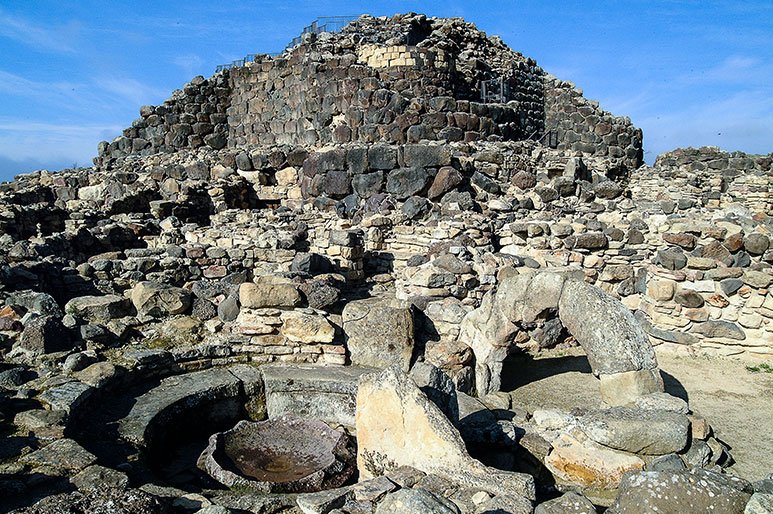
When planning your Sardinia Itinerary, a visit to the Nuragic Ruins of Su Nuraxi is an absolute must. This UNESCO World Heritage Site offers a fascinating glimpse into Sardinia’s ancient past, showcasing the island’s unique Nuragic civilization. Here’s a detailed guide to making the most of your visit to these remarkable ruins.
Why Visit Su Nuraxi?
- Historical Significance: Su Nuraxi is one of the most important and well-preserved Nuragic complexes in Sardinia.
- Unique Architecture: The site features a central tower surrounded by a village, offering insights into ancient Sardinian life.
- Cultural Insight: Learn about the Nuragic civilization, which thrived on the island from around 1800 BC to 200 AD.
What to See at Su Nuraxi
1. The Central Tower (Nuraghe)
- What to See: The main tower, or nuraghe, stands at the center of the complex and is the most iconic feature of Su Nuraxi.
- Highlights:
- Structure: Built from large basalt blocks, the tower is a testament to ancient engineering skills.
- Views: Climb to the top for panoramic views of the surrounding countryside.
2. The Village Ruins
- What to See: Surrounding the central tower are the remains of an ancient village, including huts, wells, and defensive walls.
- Highlights:
- Huts: Explore the circular huts, which were used for various purposes, including living quarters and storage.
- Wells: Discover the ancient wells that provided water to the village.
- Defensive Walls: Admire the thick walls that once protected the village from invaders.
3. The Museum
- What to See: Located near the entrance, the museum offers additional insights into the Nuragic civilization.
- Highlights:
- Artifacts: View a collection of artifacts, including pottery, tools, and weapons.
- Exhibits: Learn about the daily life, culture, and history of the Nuragic people through informative displays.
Tips for Visiting Su Nuraxi
- Guided Tours: Consider joining a guided tour to gain a deeper understanding of the site’s history and significance.
- Wear Comfortable Shoes: The terrain can be uneven, so sturdy footwear is recommended.
- Bring Water and Sunscreen: The site is mostly outdoors, so stay hydrated and protected from the sun.
- Photography: Don’t forget your camera to capture the stunning views and ancient structures.
Why Su Nuraxi is a Highlight of Your Sardinia Itinerary
Su Nuraxi offers a unique opportunity to step back in time and explore the ancient Nuragic civilization. By including this site in your Sardinia Itinerary, you’ll gain a deeper appreciation for the island’s rich history and cultural heritage. Whether you’re marveling at the central tower, exploring the village ruins, or learning about ancient artifacts, Su Nuraxi promises an unforgettable experience.
Exploring the Nuragic Ruins of Su Nuraxi is a must-do for any traveler visiting Sardinia. From the impressive central tower to the fascinating village ruins, this site offers a captivating glimpse into the island’s ancient past. So, pack your walking shoes, bring your camera, and get ready to discover the rich history of Sardinia.
Visit the Neptune’s Grotto near Alghero

When planning your Sardinia Itinerary, a visit to Neptune’s Grotto (Grotta di Nettuno) is an absolute must. This stunning sea cave, located near the charming town of Alghero, offers a mesmerizing experience with its impressive stalactites, stalagmites, and crystal-clear waters. Here’s a detailed guide to making the most of your visit to this natural wonder.
Why Visit Neptune’s Grotto?
- Natural Beauty: The cave’s intricate formations and shimmering waters create a magical atmosphere.
- Historical Significance: Named after the Roman god of the sea, Neptune, the grotto has been a popular attraction for centuries.
- Unique Experience: Accessible by boat or a scenic staircase, the journey to the grotto is as memorable as the destination itself.
What to See at Neptune’s Grotto
1. The Entrance
- What to See: The grotto’s entrance is a dramatic sight, with waves crashing against the rocky cliffs.
- Highlights:
- Boat Arrival: If arriving by boat, the approach offers stunning views of the coastline.
- Escala del Cabirol: The staircase leading down to the grotto, offering breathtaking views of the sea.
2. The Main Chamber
- What to See: The largest and most impressive chamber in the grotto, filled with stunning rock formations.
- Highlights:
- Stalactites and Stalagmites: Marvel at the intricate formations created over thousands of years.
- Lake Lamarmora: A saltwater lake within the grotto, reflecting the cave’s formations like a mirror.
3. The Music Hall
- What to See: A smaller chamber known for its acoustics, often used for concerts and events.
- Highlights:
- Acoustics: Experience the unique sound quality of the chamber.
- Formations: Admire the delicate stalactites and stalagmites that create a natural concert hall.
4. The Royal Palace
- What to See: A series of columns and formations that resemble a grand palace.
- Highlights:
- Columns: The towering formations create a majestic atmosphere.
- Lighting: The grotto is illuminated to enhance the beauty of the formations.
How to Get to Neptune’s Grotto
By Boat
- Departure: Boats leave regularly from Alghero’s harbor.
- Duration: The boat ride takes about 30 minutes.
- Highlights: Enjoy scenic views of the coastline and the chance to see dolphins.
By Car and Foot
- Drive: Drive to Capo Caccia and park at the top.
- Escala del Cabirol: Descend the 654-step staircase to reach the grotto.
- Highlights: The staircase offers stunning views and a sense of adventure.
Tips for Visiting Neptune’s Grotto
- Guided Tours: Consider joining a guided tour to learn more about the grotto’s history and geology.
- Wear Comfortable Shoes: The terrain can be uneven, and the staircase is steep.
- Bring a Jacket: The cave can be cool, even in summer.
- Photography: Don’t forget your camera to capture the stunning formations and views.
Why Neptune’s Grotto is a Highlight of Your Sardinia Itinerary
Neptune’s Grotto offers a unique and unforgettable experience, combining natural beauty, history, and adventure. By including this site in your Sardinia Itinerary, you’ll enjoy a captivating journey into one of the island’s most stunning natural wonders. Whether you’re marveling at the intricate formations, exploring the crystal-clear waters, or enjoying the scenic journey, Neptune’s Grotto promises an unforgettable experience.
Visiting Neptune’s Grotto near Alghero is a must-do for any traveler exploring Sardinia. From the dramatic entrance to the mesmerizing chambers, this natural wonder offers a captivating glimpse into the island’s beauty and history. So, pack your walking shoes, bring your camera, and get ready to discover the enchanting Neptune’s Grotto.
Hike in Gennargentu National Park

When planning your Sardinia Itinerary, a hike in Gennargentu National Park is an absolute must for nature lovers and adventure seekers. As Sardinia’s largest national park, Gennargentu offers a diverse range of landscapes, from rugged mountains and deep valleys to lush forests and pristine rivers. Here’s a detailed guide to making the most of your hiking experience in this stunning natural paradise.
Why Hike in Gennargentu National Park?
- Natural Beauty: The park is home to some of Sardinia’s most breathtaking landscapes, including its highest peak, Punta La Marmora.
- Diverse Wildlife: Spot native species like mouflon (wild sheep), golden eagles, and Sardinian deer.
- Tranquility: Escape the crowds and enjoy the peace and serenity of the great outdoors.
Top Hiking Trails in Gennargentu National Park
1. Punta La Marmora Trail
- Difficulty: Moderate to challenging.
- Distance: Approximately 10 km (round trip).
- Duration: 4-6 hours.
- Highlights:
- Summit Views: Reach the highest point in Sardinia (1,834 meters) for panoramic views of the island.
- Flora and Fauna: Spot native plants and wildlife along the trail.
- Scenic Landscapes: Enjoy stunning views of the surrounding mountains and valleys.
2. Gorropu Gorge Trail
- Difficulty: Moderate.
- Distance: Approximately 8 km (round trip).
- Duration: 3-5 hours.
- Highlights:
- Dramatic Gorge: Explore one of Europe’s deepest canyons, with walls reaching up to 500 meters.
- Rock Formations: Marvel at the impressive limestone cliffs and boulders.
- Guided Tours: Consider joining a guided tour for insights into the gorge’s geology and history.
3. Monte Spada Trail
- Difficulty: Moderate.
- Distance: Approximately 12 km (round trip).
- Duration: 5-7 hours.
- Highlights:
- Summit Views: Enjoy panoramic views of the Gennargentu range and the surrounding countryside.
- Alpine Meadows: Walk through lush meadows filled with wildflowers.
- Historical Sites: Discover ancient shepherd huts and stone structures.
4. Tiscali Village Trail
- Difficulty: Easy to moderate.
- Distance: Approximately 6 km (round trip).
- Duration: 2-4 hours.
- Highlights:
- Ancient Village: Explore the ruins of a Nuragic village hidden within a limestone mountain.
- Scenic Views: Enjoy stunning views of the Lanaitto Valley.
- Cultural Insight: Learn about the ancient Nuragic civilization and their way of life.
Tips for Hiking in Gennargentu National Park
- Prepare Adequately: Wear sturdy hiking boots, bring plenty of water, and pack snacks.
- Check Weather Conditions: The weather can change quickly in the mountains, so be prepared for all conditions.
- Respect Wildlife: Keep a safe distance from animals and avoid disturbing their natural habitat.
- Leave No Trace: Carry out all trash and respect the natural environment.
- Guided Tours: Consider joining a guided tour for a more informative and safe hiking experience.
Why Gennargentu National Park is a Highlight of Your Sardinia Itinerary
Gennargentu National Park offers a unique and unforgettable hiking experience, combining stunning landscapes, diverse wildlife, and rich cultural history. By including this park in your Sardinia Itinerary, you’ll enjoy a perfect blend of adventure, nature, and tranquility. Whether you’re summiting Punta La Marmora, exploring the Gorropu Gorge, or discovering ancient ruins, Gennargentu promises an unforgettable experience.
Hiking in Gennargentu National Park is a must-do for any traveler exploring Sardinia. From the rugged peaks to the lush valleys, this park offers a captivating journey into the island’s natural beauty and cultural heritage. So, pack your hiking boots, bring your camera, and get ready to discover the stunning landscapes of Gennargentu National Park.
Discover the Medieval Town of Bosa
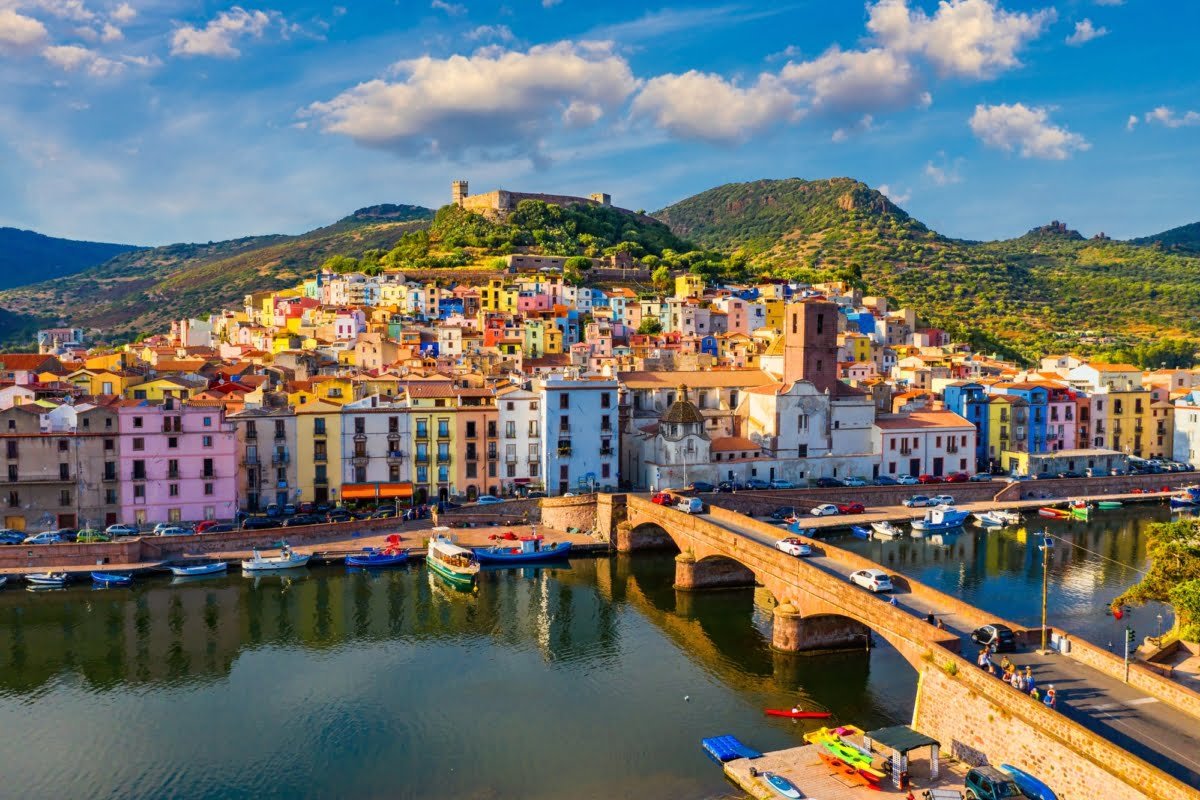
When planning your Sardinia Itinerary, a visit to the medieval town of Bosa is an absolute must. Nestled along the Temo River and surrounded by rolling hills, Bosa is one of Sardinia’s most picturesque and charming towns. Known for its colorful houses, historic castle, and vibrant atmosphere, Bosa offers a perfect blend of history, culture, and natural beauty. Here’s a detailed guide to making the most of your visit to this enchanting town.
Why Visit Bosa?
- Colorful Architecture: The pastel-colored houses lining the river create a postcard-perfect scene.
- Rich History: Explore medieval castles, ancient churches, and historic streets.
- Local Culture: Experience the town’s vibrant atmosphere, artisan shops, and traditional festivals.
What to See and Do in Bosa
1. Malaspina Castle
- What to See: Perched on a hill overlooking the town, this medieval castle offers stunning views and a glimpse into Bosa’s history.
- Highlights:
- Panoramic Views: Climb to the top for breathtaking views of Bosa and the Temo River.
- History: Learn about the castle’s construction in the 12th century and its role in defending the town.
- Church of Our Lady de Sos Regnos Altos: A small chapel within the castle walls, featuring beautiful frescoes.
2. Bosa Cathedral (Cattedrale di San Pietro Apostolo)
- What to See: This beautiful cathedral, located in the heart of Bosa, features a mix of Gothic and Baroque styles.
- Highlights:
- Interior: Admire the intricate frescoes, marble columns, and stunning altarpieces.
- Bell Tower: Climb the tower for a bird’s-eye view of the town and surrounding countryside.
3. Sa Costa Neighborhood
- What to Do: Stroll through this charming neighborhood, known for its narrow, winding streets and colorful houses.
- Highlights:
- Artisan Shops: Browse for handmade crafts, jewelry, and local products.
- Photography: Capture the picturesque scenes of colorful houses and flower-filled balconies.
4. Temo River
- What to Do: Take a leisurely walk along the river, or rent a kayak to explore the scenic waterway.
- Highlights:
- Boat Tours: Join a guided boat tour to discover the river’s hidden gems.
- Photography: Capture the reflections of the colorful houses in the water.
5. Local Markets and Cuisine
- What to Do: Experience Bosa’s vibrant local culture through its markets and cuisine.
- Highlights:
- Markets: Browse for fresh produce, local crafts, and souvenirs.
- Dining: Enjoy a meal at Ristorante Sa Pischedda, known for its traditional Sardinian dishes.
Tips for Visiting Bosa
- Wear Comfortable Shoes: The town’s streets are cobblestone and can be steep in places.
- Bring a Camera: The colorful houses and scenic views are perfect for photography.
- Check Festival Dates: Bosa hosts several traditional festivals throughout the year, offering a unique cultural experience.
- Respect Local Customs: Be mindful of local traditions and etiquette, especially when visiting religious sites.
Why Bosa is a Highlight of Your Sardinia Itinerary
Bosa offers a unique and unforgettable experience, combining colorful architecture, rich history, and vibrant local culture. By including this town in your Sardinia Itinerary, you’ll enjoy a perfect blend of exploration and relaxation. Whether you’re exploring medieval castles, strolling along the river, or savoring local cuisine, Bosa promises an unforgettable experience.
Discovering the medieval town of Bosa is a must-do for any traveler exploring Sardinia. From the historic Malaspina Castle to the colorful streets of Sa Costa, this town offers a captivating journey into the island’s beauty and heritage. So, pack your walking shoes, bring your camera, and get ready to explore the enchanting town of Bosa.
Snorkel in the Maddalena Archipelago
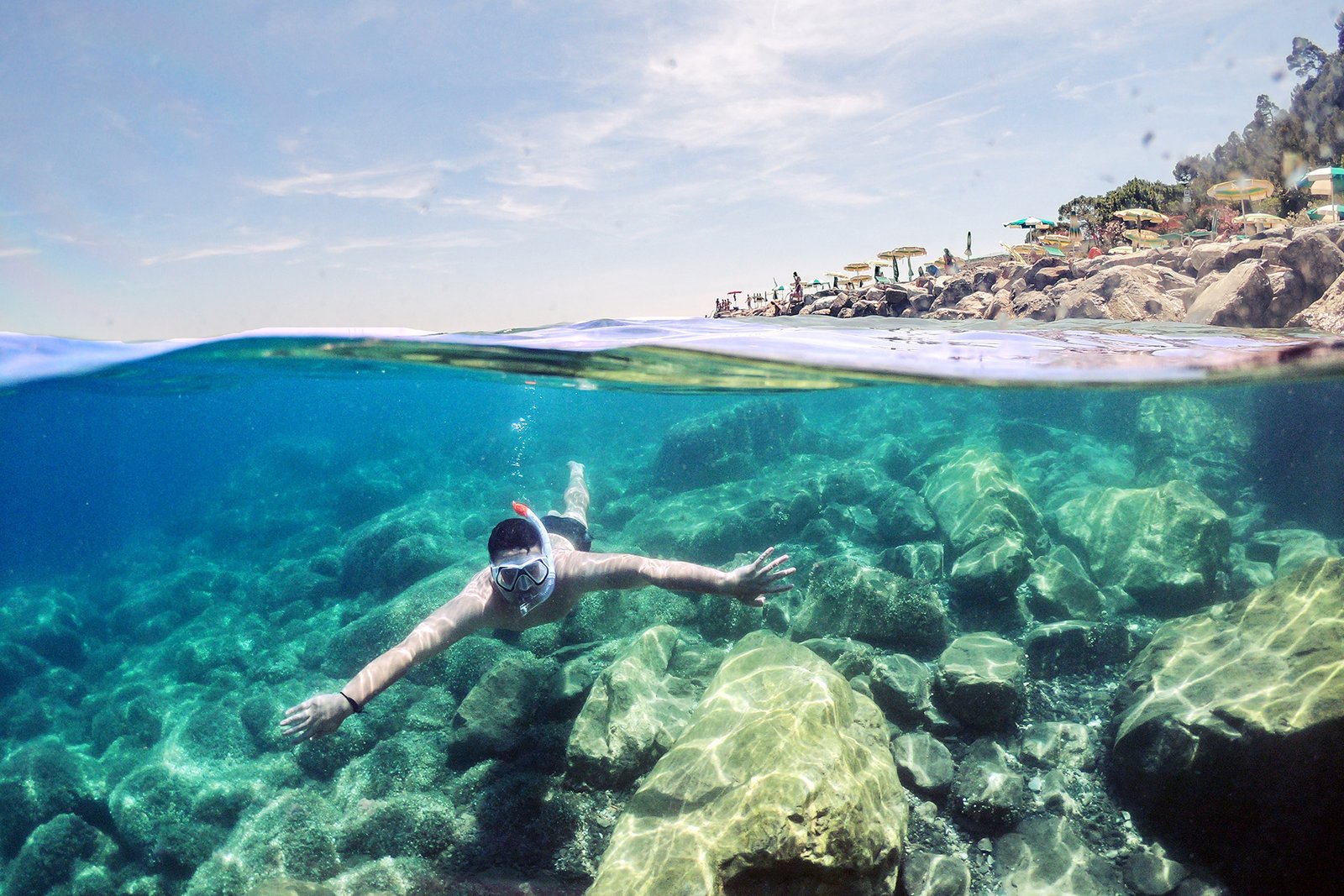
When planning your Sardinia Itinerary, a snorkeling adventure in the Maddalena Archipelago is an absolute must. This stunning group of islands, located off the northeastern coast of Sardinia, is renowned for its crystal-clear waters, vibrant marine life, and pristine beaches. Here’s a detailed guide to making the most of your snorkeling experience in this natural paradise.
Book top-rated tours and attractions on :
Viator (Best for curated global tours)
GetYourGuide (Skip-the-line tickets & local guides)
Klook (Great for Asia adventures & discounts)
Why Snorkel in the Maddalena Archipelago?
- Crystal-Clear Waters: The archipelago’s waters are some of the clearest in the Mediterranean, offering excellent visibility for snorkeling.
- Vibrant Marine Life: Discover a diverse array of fish, corals, and other marine creatures.
- Pristine Beaches: The islands are home to some of the most beautiful beaches in Sardinia, perfect for relaxing after a snorkeling session.
Top Snorkeling Spots in the Maddalena Archipelago
1. Spiaggia Rosa (Pink Beach)
- Location: On the island of Budelli.
- Highlights:
- Pink Sand: The beach is famous for its unique pink sand, created by tiny fragments of coral and shells.
- Marine Life: Spot a variety of fish and other marine creatures in the clear waters.
- Tips:
- Access: Access is restricted to protect the beach, but you can snorkel nearby and admire it from the water.
- Guided Tours: Join a guided boat tour that includes snorkeling stops.
2. Cala Corsara
- Location: On the island of Spargi.
- Highlights:
- Clear Waters: Ideal for snorkeling, with excellent visibility.
- Rock Formations: Explore underwater caves and rock formations teeming with marine life.
- Tips:
- Facilities: There are no facilities on the beach, so bring your own snacks and water.
- Boat Tours: Many boat tours include a stop at Cala Corsara for snorkeling.
3. Cala Coticcio
- Location: On the island of Caprera.
- Highlights:
- Secluded Cove: A quieter spot, perfect for a peaceful snorkeling experience.
- Marine Biodiversity: Discover a wide variety of fish, sea urchins, and other marine life.
- Tips:
- Hiking: The beach is accessible via a short hike, so wear comfortable shoes.
- Snorkeling Gear: Bring your own gear, as there are no rental facilities on the beach.
4. Santa Maria Island
- Location: Near the main island of La Maddalena.
- Highlights:
- Shallow Waters: Perfect for beginners and families with children.
- Marine Reserve: Part of the Maddalena Archipelago National Park, offering protected and pristine waters.
- Tips:
- Guided Tours: Join a guided snorkeling tour to learn more about the marine life and ecosystem.
- Facilities: There are restrooms and a small bar on the island.
Tips for Snorkeling in the Maddalena Archipelago
- Bring Your Own Gear: While some boat tours provide snorkeling equipment, it’s best to bring your own for a comfortable fit.
- Respect Marine Life: Avoid touching or disturbing the marine creatures and corals.
- Stay Safe: Always snorkel with a buddy and be aware of your surroundings, including boat traffic.
- Sun Protection: Wear a rash guard or wetsuit to protect against the sun and potential jellyfish stings.
- Hydration: Bring plenty of water to stay hydrated, especially during summer months.
Why Snorkeling in the Maddalena Archipelago is a Highlight of Your Sardinia Itinerary
Snorkeling in the Maddalena Archipelago offers a unique and unforgettable experience, combining stunning underwater scenery, vibrant marine life, and pristine beaches. By including this activity in your Sardinia Itinerary, you’ll enjoy a perfect blend of adventure and relaxation. Whether you’re exploring the pink sands of Spiaggia Rosa, the rock formations of Cala Corsara, or the secluded coves of Cala Coticcio, the Maddalena Archipelago promises an unforgettable snorkeling experience.
Snorkeling in the Maddalena Archipelago is a must-do for any traveler exploring Sardinia. From the crystal-clear waters to the vibrant marine life, this natural paradise offers a captivating journey into the island’s underwater beauty. So, pack your snorkeling gear, bring your sense of adventure, and get ready to discover the stunning marine world of the Maddalena Archipelago.
Taste Sardinian Cuisine in Cagliari

When planning your Sardinia Itinerary, indulging in the island’s rich and flavorful cuisine is an absolute must. Cagliari, the vibrant capital of Sardinia, offers a plethora of dining options where you can savor traditional Sardinian dishes. From hearty pastas to succulent meats and fresh seafood, Cagliari’s culinary scene is a feast for the senses. Here’s a detailed guide to making the most of your gastronomic experience in this charming city.
Why Taste Sardinian Cuisine in Cagliari?
- Authentic Flavors: Cagliari is home to some of the best restaurants and trattorias serving traditional Sardinian dishes.
- Local Ingredients: The city’s proximity to the sea and fertile countryside ensures fresh, high-quality ingredients.
- Cultural Insight: Dining in Cagliari offers a glimpse into the island’s rich culinary heritage and traditions.
Must-Try Sardinian Dishes in Cagliari
1. Culurgiones
- What It Is: Stuffed pasta similar to ravioli, typically filled with potatoes, pecorino cheese, and mint.
- Where to Try: Ristorante Sa Cardiga e Su Schironi, known for its authentic Sardinian cuisine.
2. Porceddu (Roast Suckling Pig)
- What It Is: A traditional Sardinian dish featuring tender, slow-roasted suckling pig.
- Where to Try: Trattoria Gino, a local favorite for its hearty and flavorful dishes.
3. Fregola con Arselle
- What It Is: A seafood dish made with fregola (a type of pasta similar to couscous) and clams.
- Where to Try: Ristorante Il Pescatore, offering fresh seafood and Mediterranean flavors.
4. Pane Carasau
- What It Is: Thin, crispy flatbread often served as an appetizer or snack.
- Where to Try: Antica Cagliari, known for its traditional Sardinian bread and pastries.
5. Seadas
- What It Is: A dessert made of fried pastry filled with pecorino cheese and drizzled with honey.
- Where to Try: Pasticceria Gambero, famous for its sweet treats and pastries.
Top Restaurants in Cagliari
1. Ristorante Sa Cardiga e Su Schironi
- Cuisine: Traditional Sardinian.
- Highlights:
- Culurgiones: A must-try dish at this popular restaurant.
- Atmosphere: Cozy and welcoming, with a focus on local flavors.
2. Trattoria Gino
- Cuisine: Sardinian and Italian.
- Highlights:
- Porceddu: Known for its succulent roast suckling pig.
- Local Wines: Pair your meal with a glass of local Cannonau wine.
3. Ristorante Il Pescatore
- Cuisine: Seafood and Mediterranean.
- Highlights:
- Fregola con Arselle: A signature dish featuring fresh clams and fregola.
- Waterfront Views: Enjoy your meal with stunning views of the marina.
4. Antica Cagliari
- Cuisine: Traditional Sardinian.
- Highlights:
- Pane Carasau: Perfect for an appetizer or snack.
- Local Specialties: A wide range of traditional dishes made with local ingredients.
5. Pasticceria Gambero
- Cuisine: Pastries and desserts.
- Highlights:
- Seadas: A must-try dessert at this famous pastry shop.
- Coffee and Sweets: Perfect for a mid-day treat or after-dinner indulgence.
Tips for Dining in Cagliari
- Reservations: Popular restaurants can fill up quickly, especially during peak season, so book in advance.
- Local Wines: Pair your meal with a glass of local wine, such as Vermentino or Cannonau.
- Seasonal Dishes: Try seasonal specialties for the freshest and most authentic flavors.
- Street Food: Don’t miss the chance to try Sardinian street food, such as pani cun sartizzu (sausage sandwich) or culurgiones fritti (fried stuffed pasta).
Why Sardinian Cuisine is a Highlight of Your Sardinia Itinerary
Sardinian cuisine offers a unique and flavorful experience, reflecting the island’s rich cultural heritage and natural bounty. By including a culinary adventure in your Sardinia Itinerary, you’ll enjoy a perfect blend of delicious food, local traditions, and warm hospitality. Whether you’re savoring a plate of culurgiones, indulging in roast suckling pig, or enjoying a sweet seadas, Cagliari’s culinary scene promises an unforgettable experience.
Tasting Sardinian cuisine in Cagliari is a must-do for any traveler exploring the island. From hearty pastas and succulent meats to fresh seafood and sweet desserts, the city’s culinary offerings are sure to delight your taste buds. So, bring your appetite, explore the local flavors, and get ready to savor the best of Sardinian cuisine in Cagliari.
Explore the Colorful Streets of Castelsardo
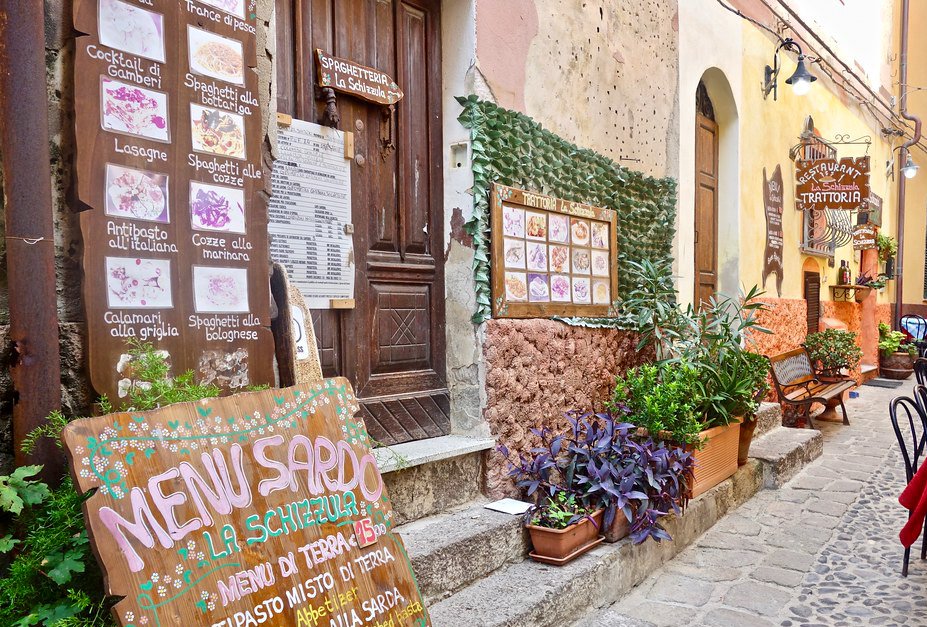
When planning your Sardinia Itinerary, a visit to the charming town of Castelsardo is an absolute must. Perched on a hill overlooking the Mediterranean Sea, this medieval town is known for its colorful streets, historic landmarks, and vibrant atmosphere. Here’s a detailed guide to making the most of your visit to this picturesque destination.
Why Visit Castelsardo?
- Colorful Architecture: The pastel-colored houses and narrow, winding streets create a postcard-perfect scene.
- Rich History: Explore medieval castles, ancient churches, and historic streets.
- Local Culture: Experience the town’s vibrant atmosphere, artisan shops, and traditional festivals.
What to See and Do in Castelsardo
1. Castello dei Doria (Doria Castle)
- What to See: This medieval castle, perched on the highest point of the town, offers stunning views and a glimpse into Castelsardo’s history.
- Highlights:
- Panoramic Views: Climb to the top for breathtaking views of the town and the Mediterranean Sea.
- Museum of Mediterranean Weaving: Located within the castle, this museum showcases traditional Sardinian weaving techniques and artifacts.
2. Cathedral of Sant’Antonio Abate
- What to See: This beautiful cathedral, located in the heart of Castelsardo, features a mix of Gothic and Baroque styles.
- Highlights:
- Interior: Admire the intricate frescoes, marble columns, and stunning altarpieces.
- Bell Tower: Climb the tower for a bird’s-eye view of the town and surrounding countryside.
3. Elephant Rock (Roccia dell’Elefante)
- What to See: A natural rock formation that resembles an elephant, located just outside the town.
- Highlights:
- Photography: Capture the unique rock formation and surrounding landscape.
- History: Learn about the ancient Nuragic tombs carved into the rock.
4. Local Markets and Artisan Shops
- What to Do: Stroll through the town’s markets and artisan shops, known for their handmade crafts and local products.
- Highlights:
- Basket Weaving: Castelsardo is famous for its traditional basket weaving, so look for beautifully crafted baskets and other woven items.
- Local Products: Browse for olive oil, wine, and other Sardinian specialties.
5. Marina and Beaches
- What to Do: Take a leisurely walk along the marina, or head to one of the nearby beaches for a relaxing afternoon by the sea.
- Highlights:
- Marina: Enjoy the scenic views and vibrant atmosphere of the waterfront.
- Beaches: Visit nearby beaches like Lu Bagnu for swimming and sunbathing.
Tips for Visiting Castelsardo
- Wear Comfortable Shoes: The town’s streets are cobblestone and can be steep in places.
- Bring a Camera: The colorful houses and scenic views are perfect for photography.
- Check Festival Dates: Castelsardo hosts several traditional festivals throughout the year, offering a unique cultural experience.
- Respect Local Customs: Be mindful of local traditions and etiquette, especially when visiting religious sites.
Why Castelsardo is a Highlight of Your Sardinia Itinerary
Castelsardo offers a unique and unforgettable experience, combining colorful architecture, rich history, and vibrant local culture. By including this town in your Sardinia Itinerary, you’ll enjoy a perfect blend of exploration and relaxation. Whether you’re exploring medieval castles, strolling along the marina, or savoring local cuisine, Castelsardo promises an unforgettable experience.
Exploring the colorful streets of Castelsardo is a must-do for any traveler visiting Sardinia. From the historic Castello dei Doria to the charming marina and artisan shops, this town offers a captivating journey into the island’s beauty and heritage. So, pack your walking shoes, bring your camera, and get ready to discover the enchanting town of Castelsardo.
Visit the Roman Amphitheatre in Cagliari
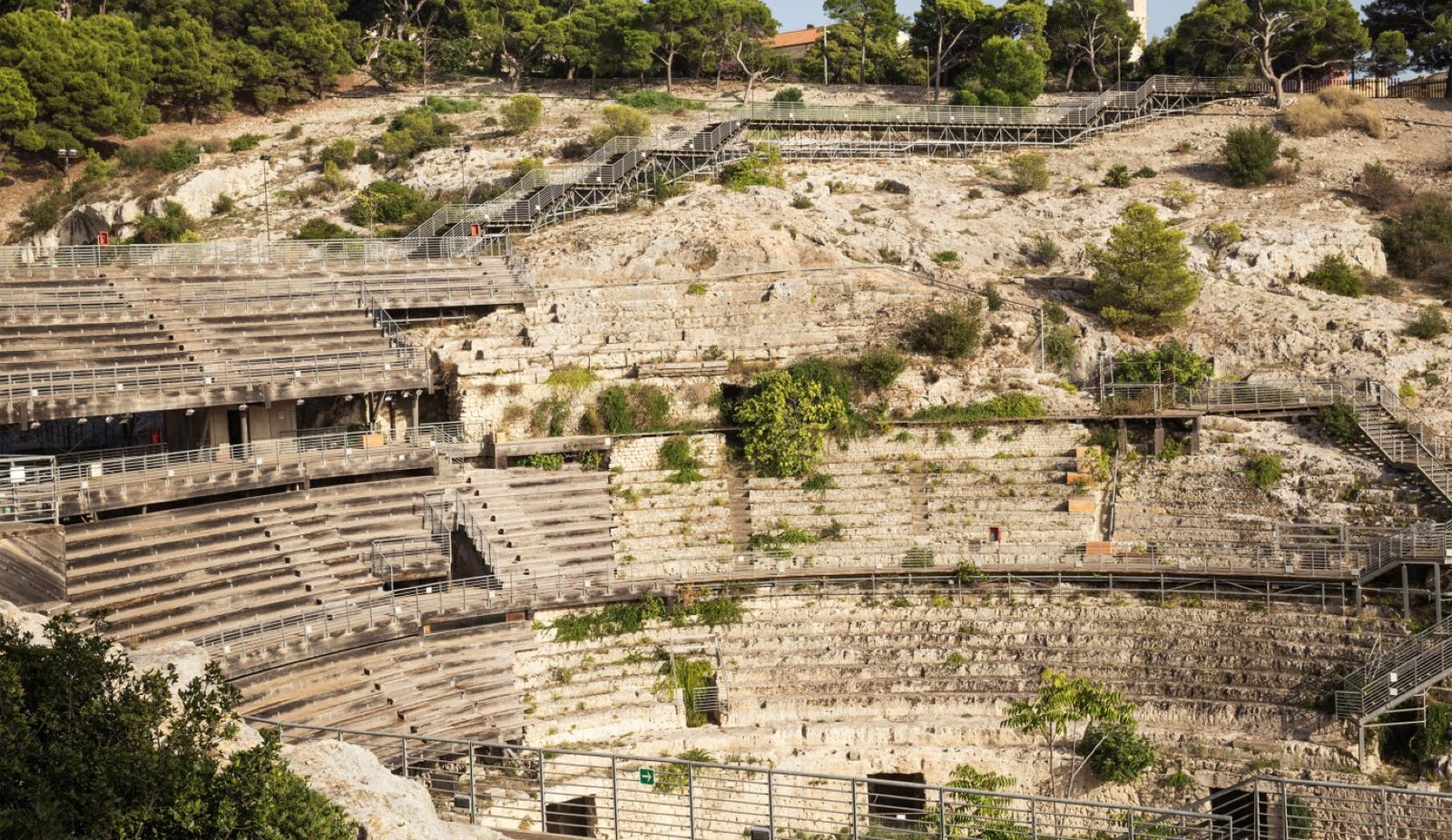
When planning your Sardinia Itinerary, a visit to the Roman Amphitheatre in Cagliari is an absolute must. This ancient structure, carved into the hillside, offers a fascinating glimpse into Sardinia’s Roman past and is one of the most significant archaeological sites on the island. Here’s a detailed guide to making the most of your visit to this historic landmark.
Why Visit the Roman Amphitheatre?
- Historical Significance: The amphitheatre dates back to the 2nd century AD and is one of the most important Roman ruins in Sardinia.
- Architectural Marvel: The structure is partially carved into the rock, showcasing impressive Roman engineering.
- Cultural Insight: Learn about the gladiatorial games and public spectacles that took place here.
What to See at the Roman Amphitheatre
1. The Amphitheatre Structure
- What to See: The amphitheatre could accommodate up to 10,000 spectators and was used for gladiatorial games, public spectacles, and theatrical performances.
- Highlights:
- Arena: Walk through the central arena where gladiators once fought.
- Seating Area: Explore the tiered seating areas, which offer a sense of the amphitheatre’s scale and grandeur.
- Tunnels and Chambers: Discover the underground tunnels and chambers used by gladiators and animals.
2. The Surrounding Area
- What to See: The amphitheatre is surrounded by lush greenery, offering a peaceful and scenic setting.
- Highlights:
- Gardens: Stroll through the gardens and enjoy the natural beauty of the area.
- Views: The elevated location provides stunning views of Cagliari and the surrounding countryside.
3. Guided Tours 🚶♂️
- What to Do: Join a guided tour to gain a deeper understanding of the amphitheatre’s history and significance.
- Highlights:
- Expert Insights: Learn about the construction, use, and eventual decline of the amphitheatre from knowledgeable guides.
- Interactive Displays: Some tours include multimedia exhibits that bring the ancient site to life.
Tips for Visiting the Roman Amphitheatre
- Opening Hours: The amphitheatre is generally open from 9:00 AM to 5:00 PM, but hours may vary, so check in advance.
- Guided Tours: Consider joining a guided tour for a more informative and engaging experience.
- Wear Comfortable Shoes: The terrain can be uneven, so sturdy footwear is recommended.
- Bring Water and Sunscreen: The site is mostly outdoors, so stay hydrated and protected from the sun.
- Photography: Don’t forget your camera to capture the stunning views and ancient structures.
Why the Roman Amphitheatre is a Highlight of Your Sardinia Itinerary
The Roman Amphitheatre in Cagliari offers a unique and unforgettable experience, combining ancient history, impressive architecture, and scenic beauty. By including this site in your Sardinia Itinerary, you’ll gain a deeper appreciation for the island’s rich cultural heritage. Whether you’re exploring the arena, walking through the seating areas, or enjoying the surrounding gardens, the Roman Amphitheatre promises an unforgettable experience.
Visiting the Roman Amphitheatre in Cagliari is a must-do for any traveler exploring Sardinia. From the impressive structure to the fascinating history, this ancient site offers a captivating journey into the island’s Roman past. So, pack your walking shoes, bring your camera, and get ready to discover the rich history of Sardinia.
Relax on the Beaches of Villasimius
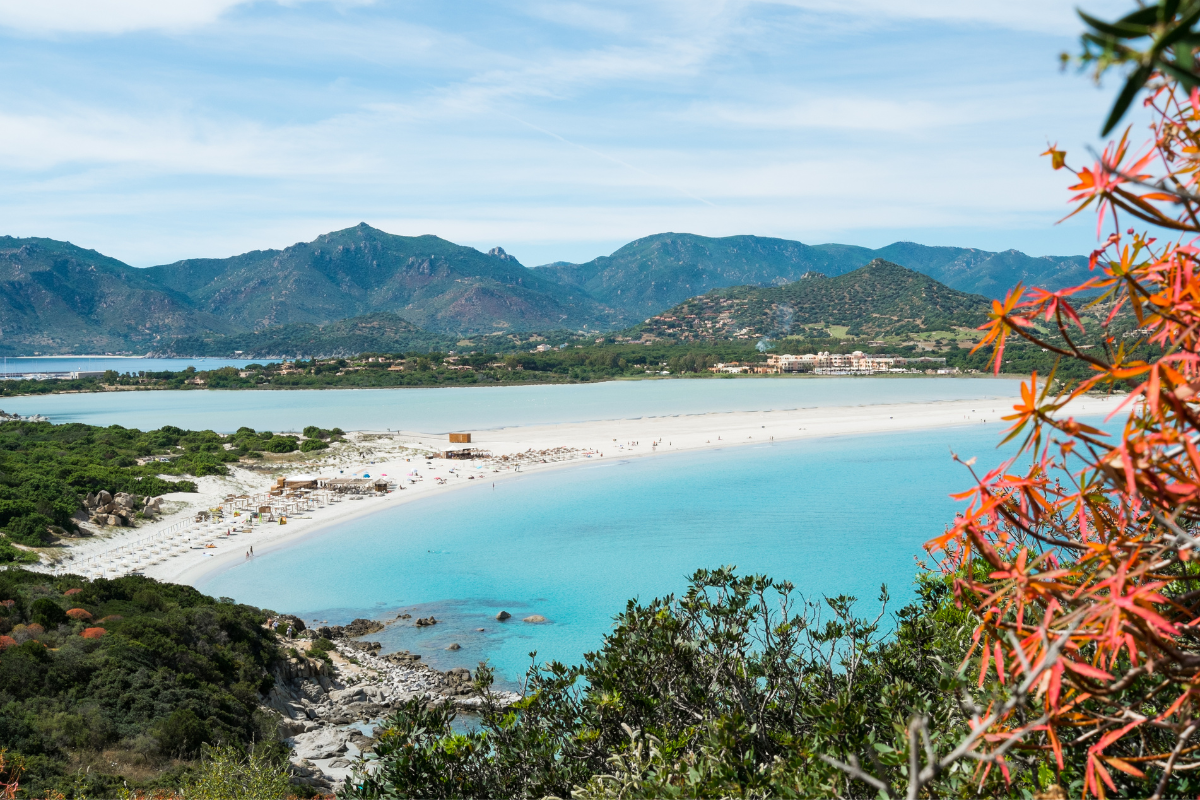
When planning your Sardinia Itinerary, a visit to the stunning beaches of Villasimius is an absolute must. Located on the southeastern coast of Sardinia, Villasimius is renowned for its crystal-clear waters, golden sands, and pristine natural beauty. Here’s a detailed guide to making the most of your beach day in this breathtaking destination.
Why Visit the Beaches of Villasimius?
- Crystal-Clear Waters: The beaches in Villasimius are known for their turquoise waters, perfect for swimming and snorkeling.
- Golden Sands: The soft, golden sands are ideal for sunbathing and beach games.
- Natural Beauty: Surrounded by lush greenery and granite rocks, the beaches offer stunning scenery and a tranquil atmosphere.
Top Beaches in Villasimius
1. Porto Giunco Beach
- What to Do: Relax on one of the most famous beaches in Villasimius, known for its fine white sand and clear waters.
- Highlights:
- Swimming and Snorkeling: The calm, shallow waters are perfect for swimming and exploring marine life.
- Scenic Views: Enjoy views of the nearby Notre Dame di Capo Carbonara and the Torre di Porto Giunco.
- Beach Clubs: Rent sunbeds and umbrellas for added comfort.
2. Simius Beach
- What to Do: Spend a relaxing day at this family-friendly beach, located close to the town center.
- Highlights:
- Shallow Waters: Ideal for families with children.
- Facilities: Restrooms, showers, and beach bars are available.
- Water Sports: Try paddleboarding, kayaking, or windsurfing.
3. Campulongu Beach
- What to Do: Enjoy a peaceful day at this smaller, less crowded beach.
- Highlights:
- Tranquility: Perfect for those seeking a quieter beach experience.
- Scenic Views: Surrounded by granite rocks and lush vegetation.
- Snorkeling: Explore the vibrant marine life just offshore.
4. Punta Molentis Beach
- What to Do: Visit this secluded beach, accessible via a short hike or boat ride.
- Highlights:
- Secluded Cove: Offers a more private and intimate beach experience.
- Natural Beauty: Surrounded by rugged cliffs and clear waters.
- Snorkeling: Discover underwater caves and marine life.
Tips for Visiting the Beaches of Villasimius
- Arrive Early: To secure a good spot, especially during peak season.
- Bring Snorkeling Gear: The underwater scenery is worth exploring.
- Sun Protection: Wear sunscreen, a hat, and sunglasses to protect against the sun.
- Hydration: Bring plenty of water to stay hydrated, especially during summer months.
- Respect Nature: Carry out all trash and respect the natural environment.
Why the Beaches of Villasimius are a Highlight of Your Sardinia Itinerary
The beaches of Villasimius offer a perfect blend of natural beauty, relaxation, and outdoor activities. By including these beaches in your Sardinia Itinerary, you’ll enjoy a memorable day of sun, sea, and sand. Whether you’re lounging on the golden sands, swimming in the crystal-clear waters, or exploring marine life, Villasimius promises an unforgettable beach experience.
Relaxing on the beaches of Villasimius is a must-do for any traveler exploring Sardinia. From the famous Porto Giunco Beach to the secluded Punta Molentis, each beach offers its own unique charm and beauty. So, pack your swimsuit, bring your sunscreen, and get ready to unwind on some of the most beautiful beaches in Sardinia.
Sardinia Itinerary: In Conclusion
Sardinia is a destination that offers something for everyone, from its stunning beaches and ancient ruins to its delicious cuisine and vibrant culture. With this Sardinia Itinerary, you’ll have the perfect guide to exploring the island’s highlights in just one week. Whether you’re relaxing on the Costa Smeralda, hiking in the Gennargentu Mountains, or savoring a glass of Vermentino wine, Sardinia is sure to leave you with unforgettable memories.
So, pack your bags, grab your map, and get ready to explore the beauty of Sardinia.
Disclosure: Some links in this post are affiliate links. If you make a purchase through one of these links, we may earn a small commission (at no extra cost to you!). We're very grateful when you use our links to make a purchase:-).
If you have any questions, leave a comment below or send me a message!
Read More .....
